
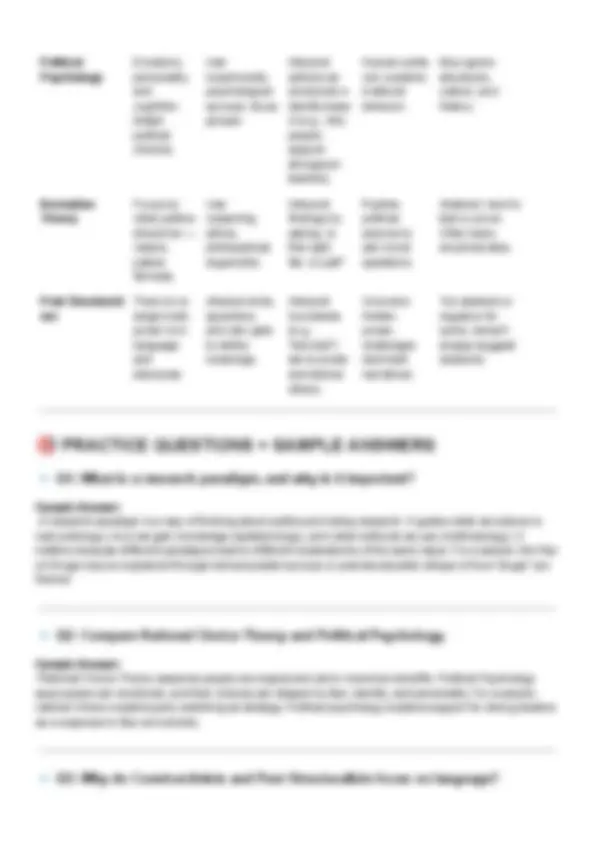
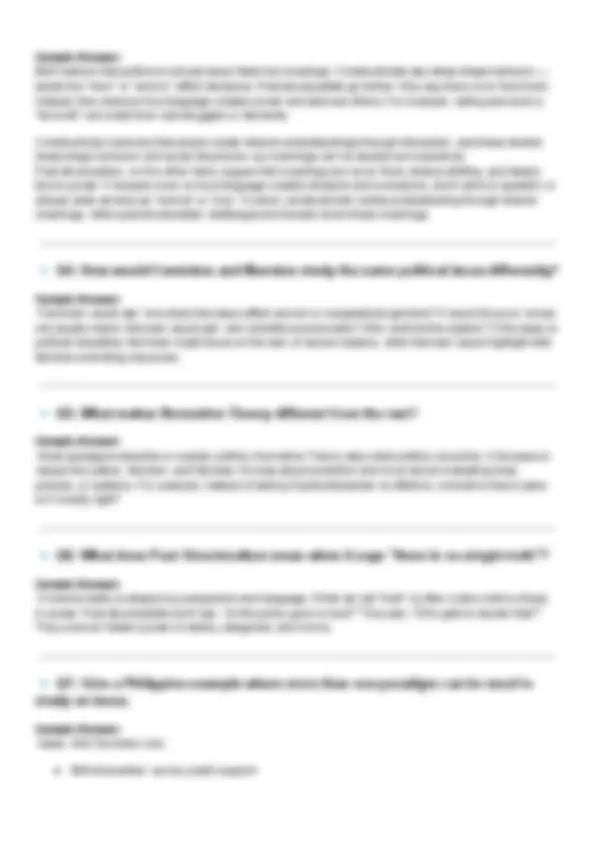

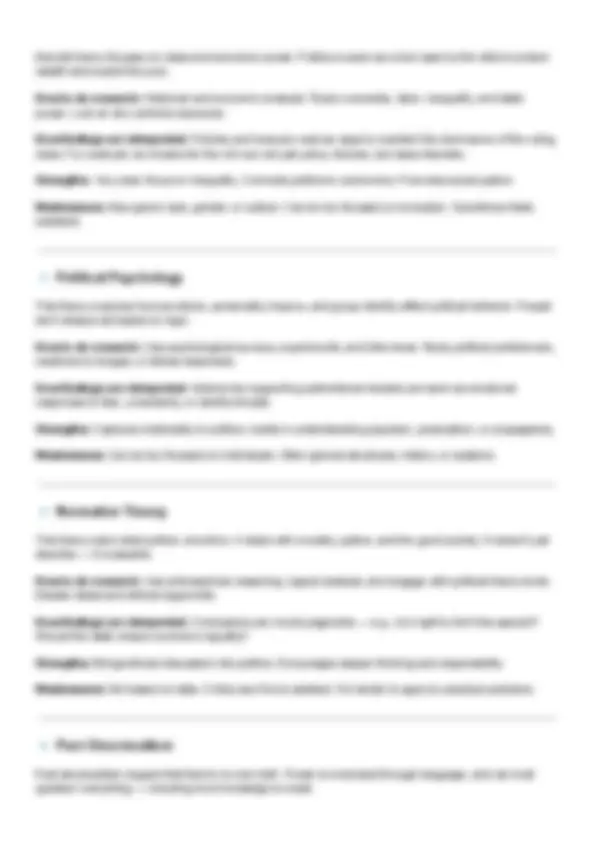
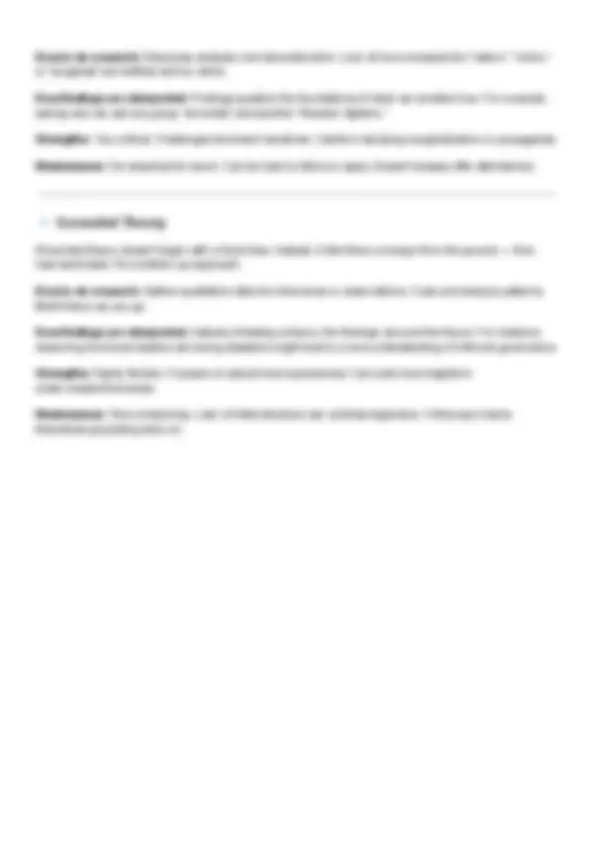
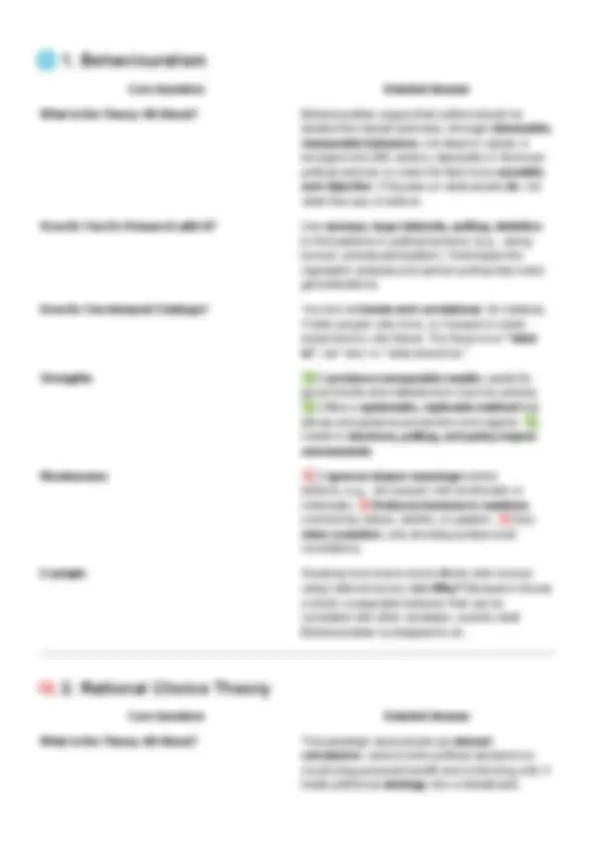
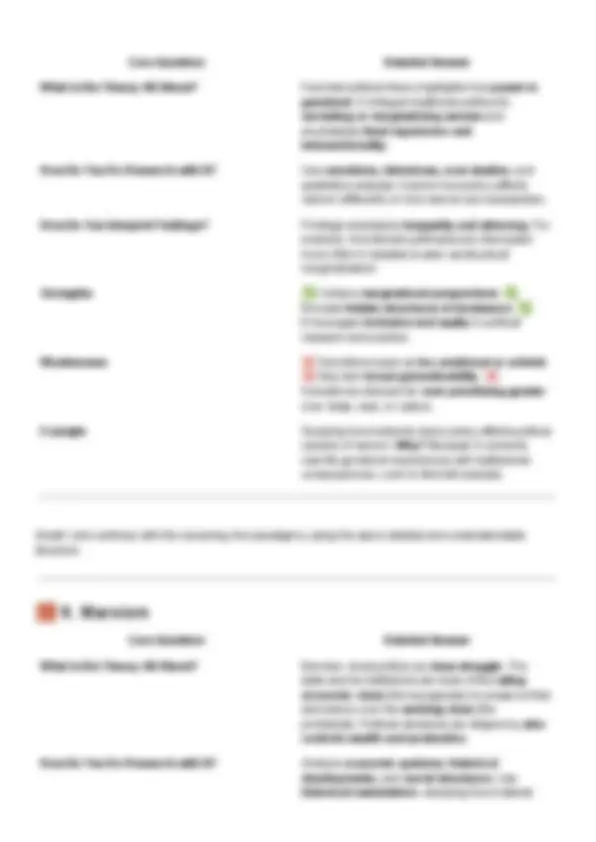
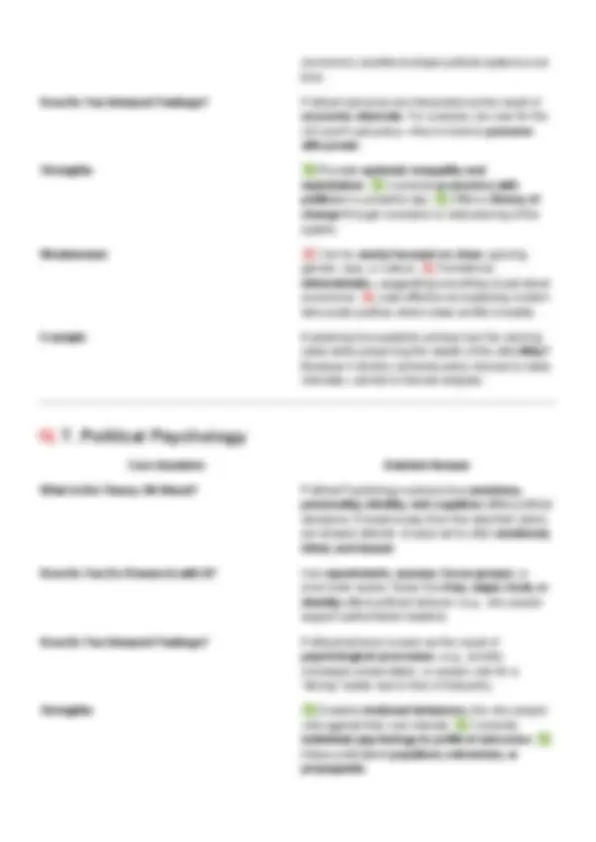
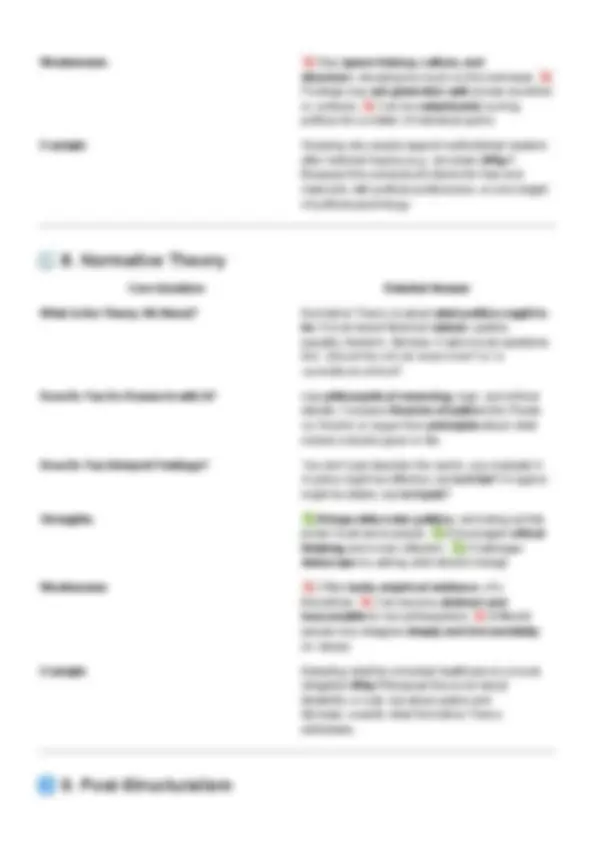
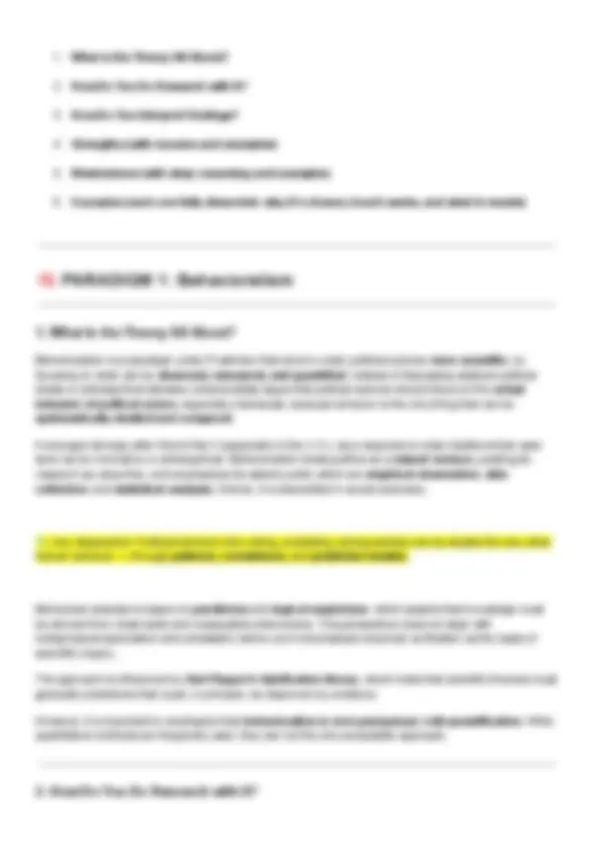
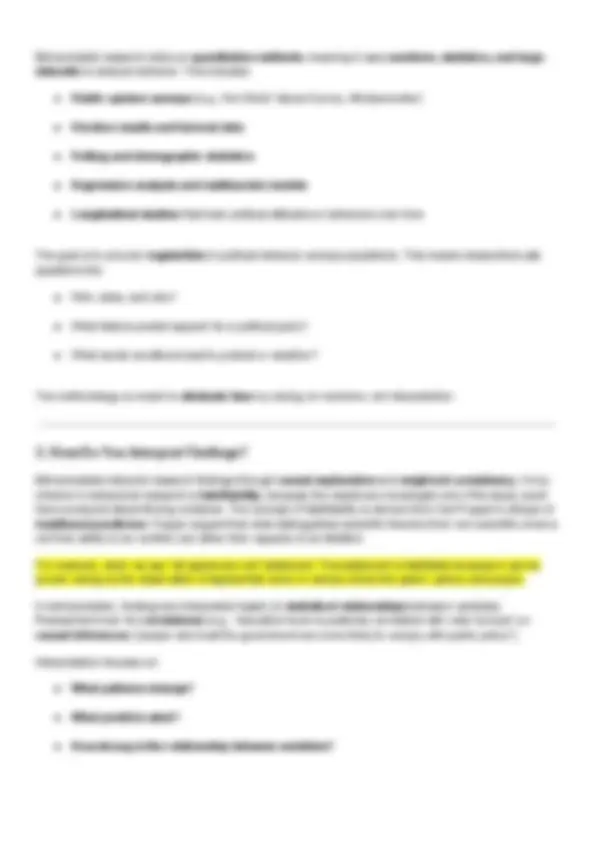
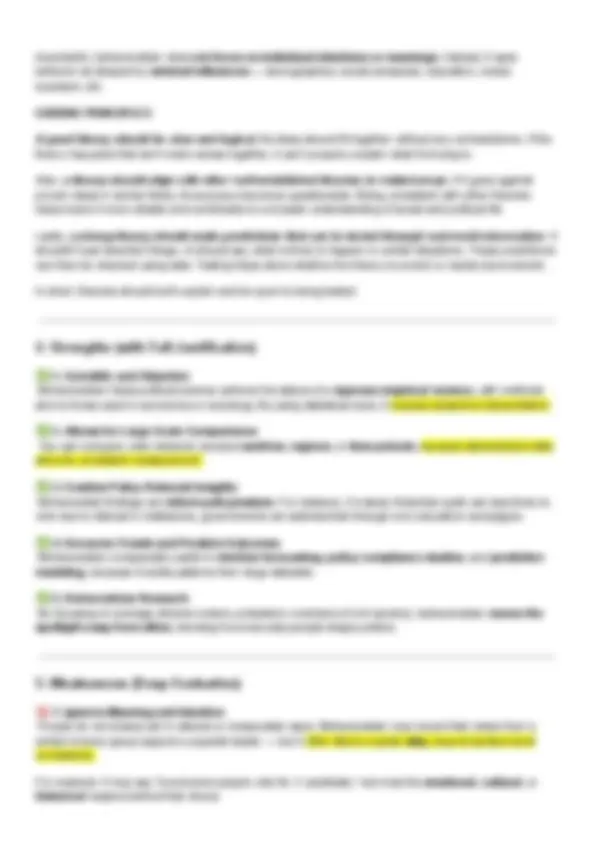
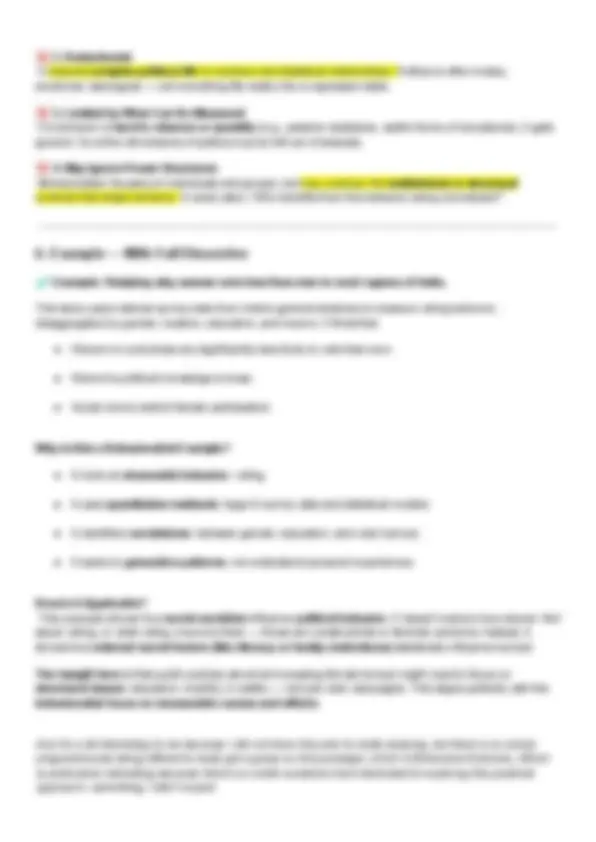

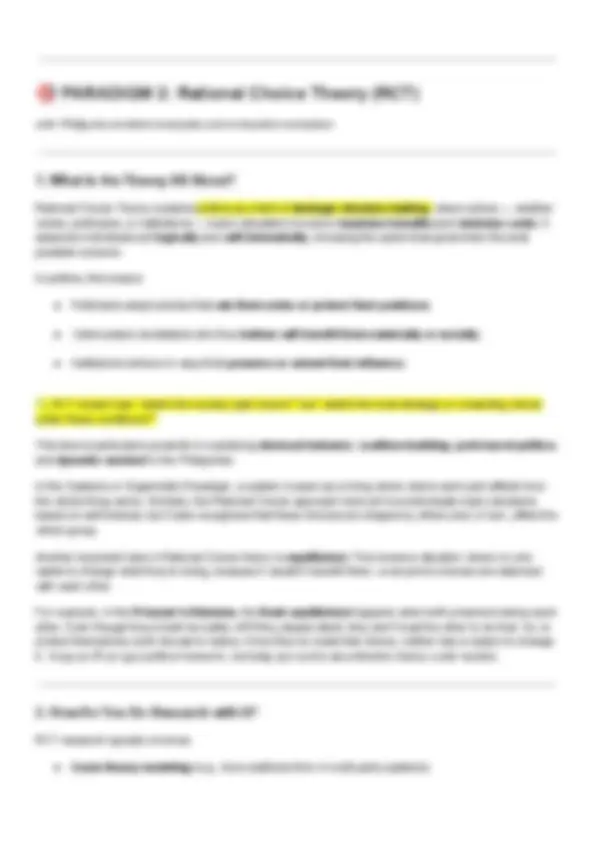
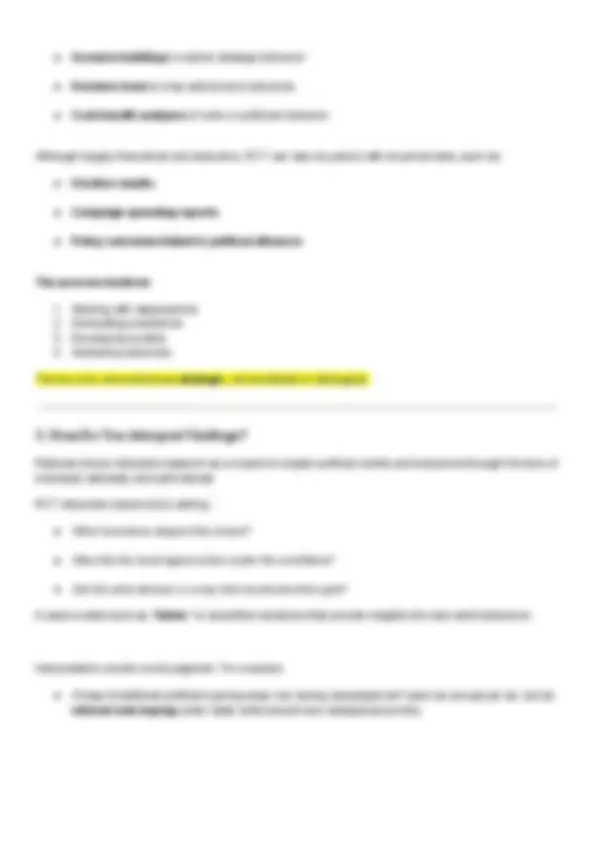
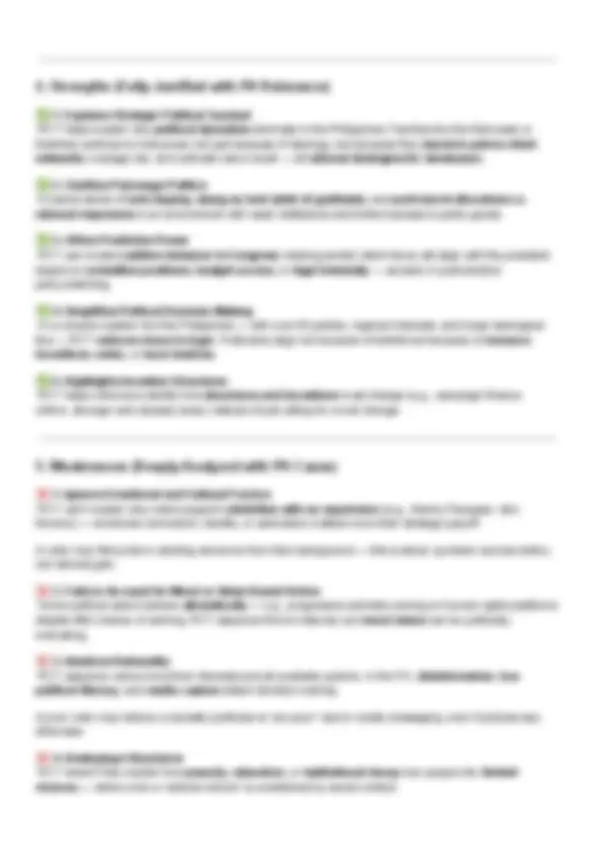
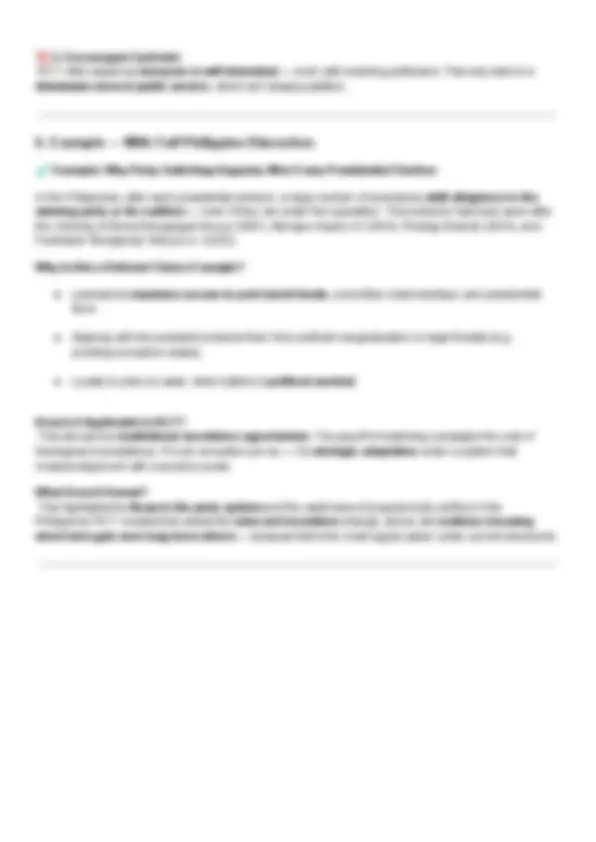
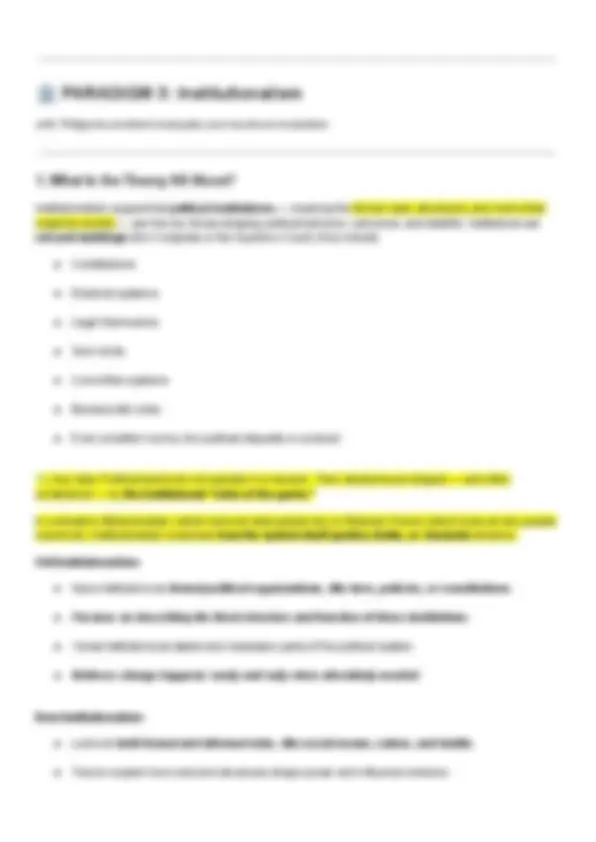
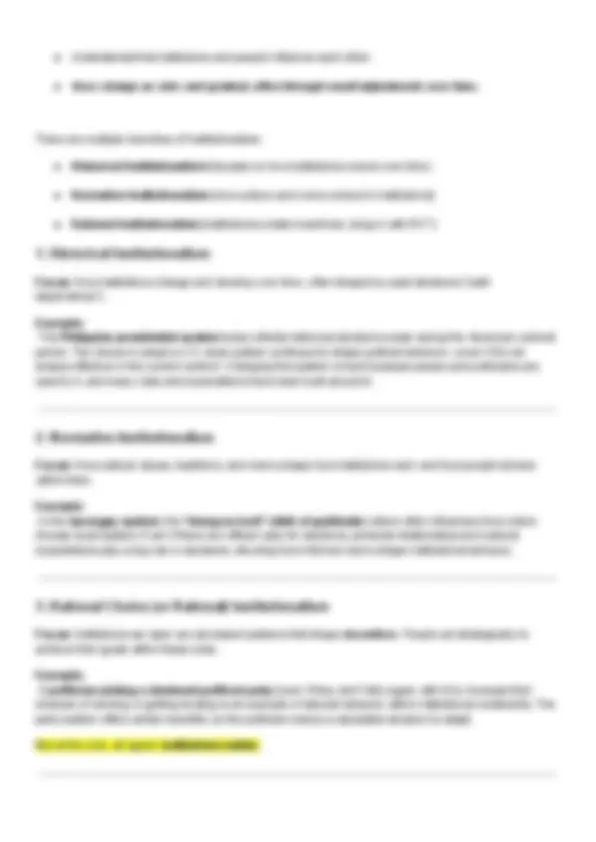
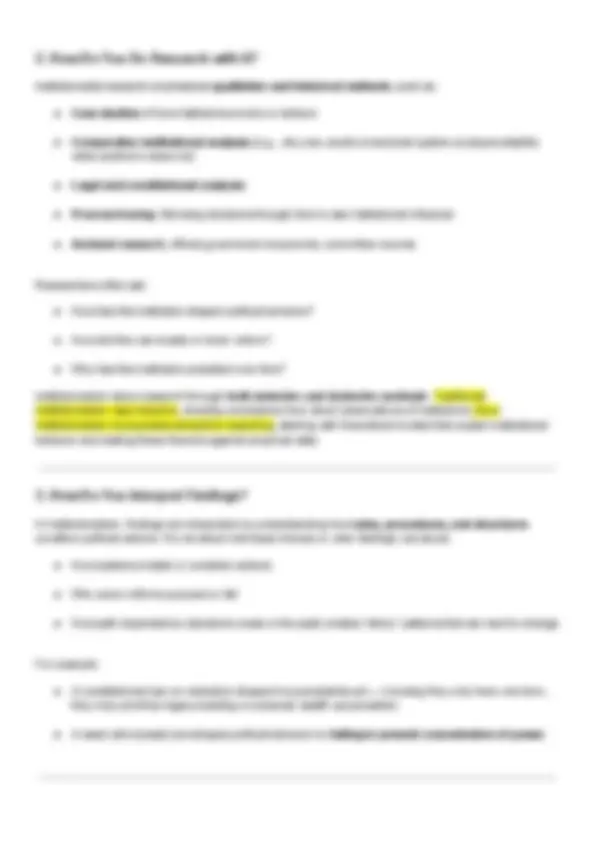
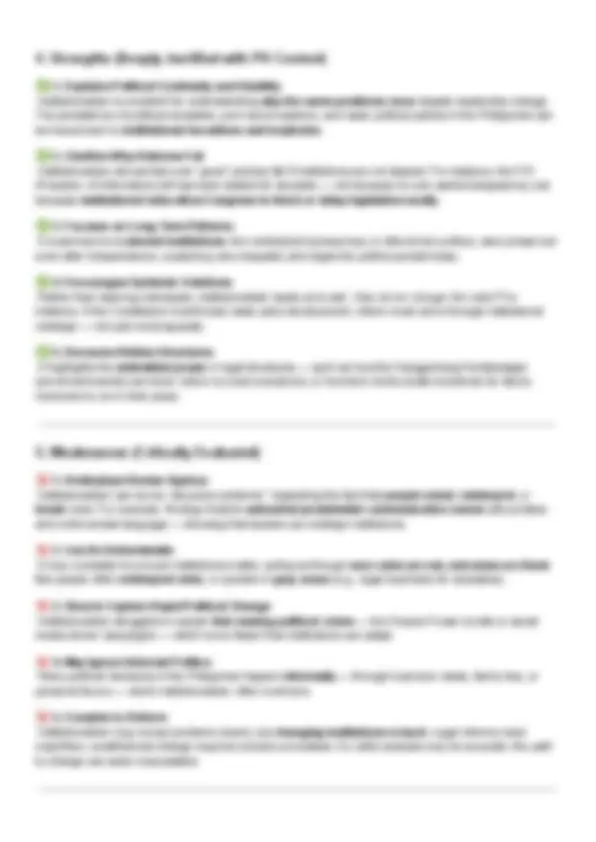
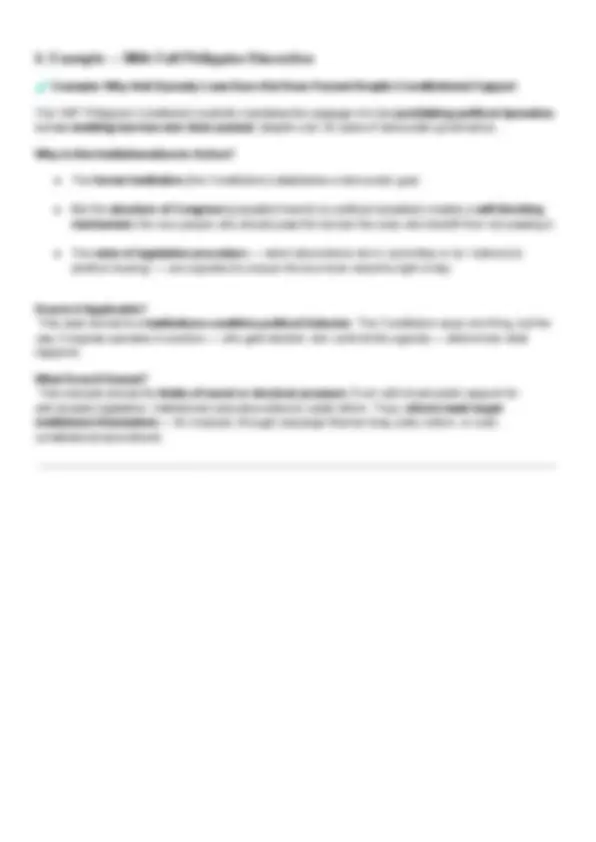
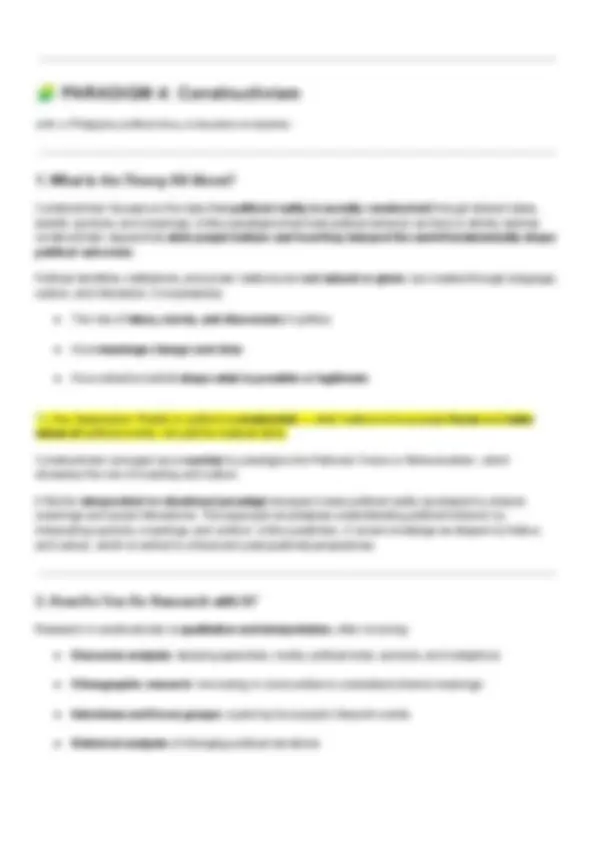
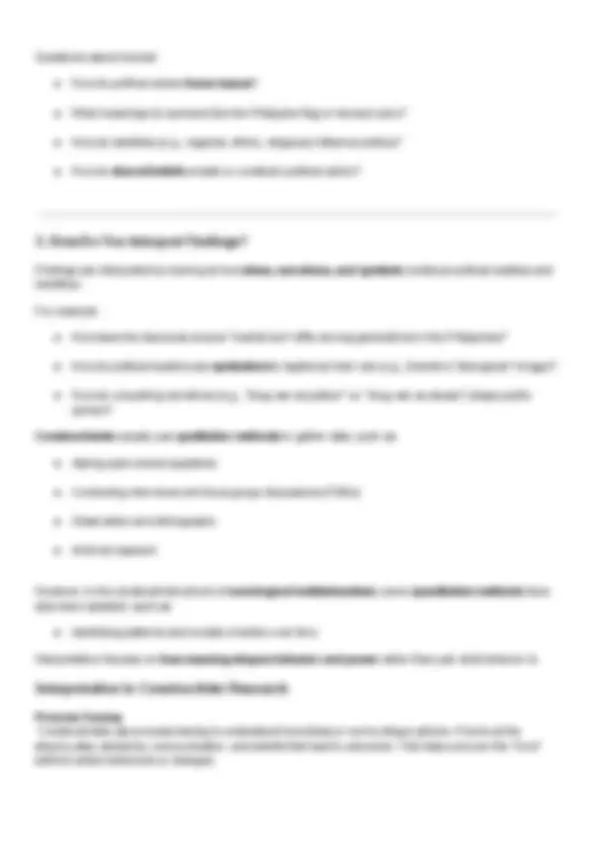
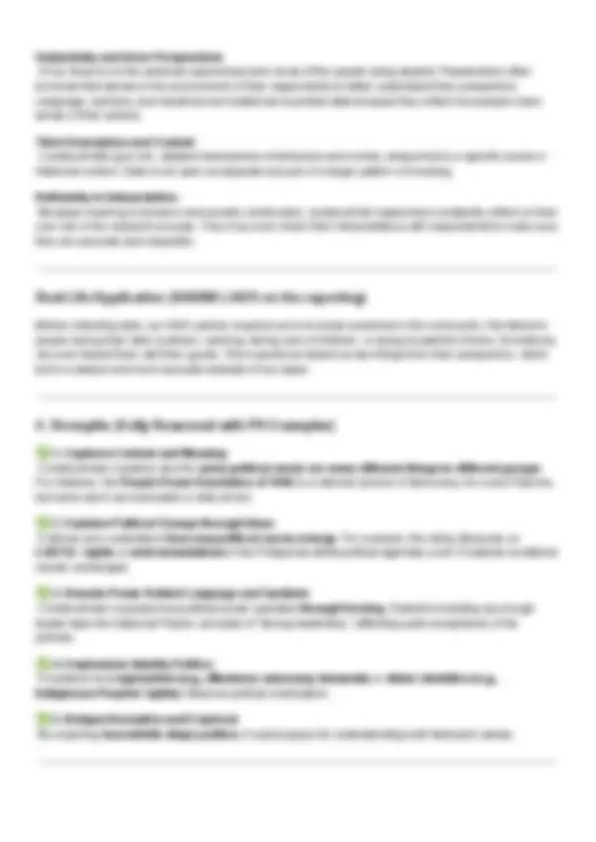
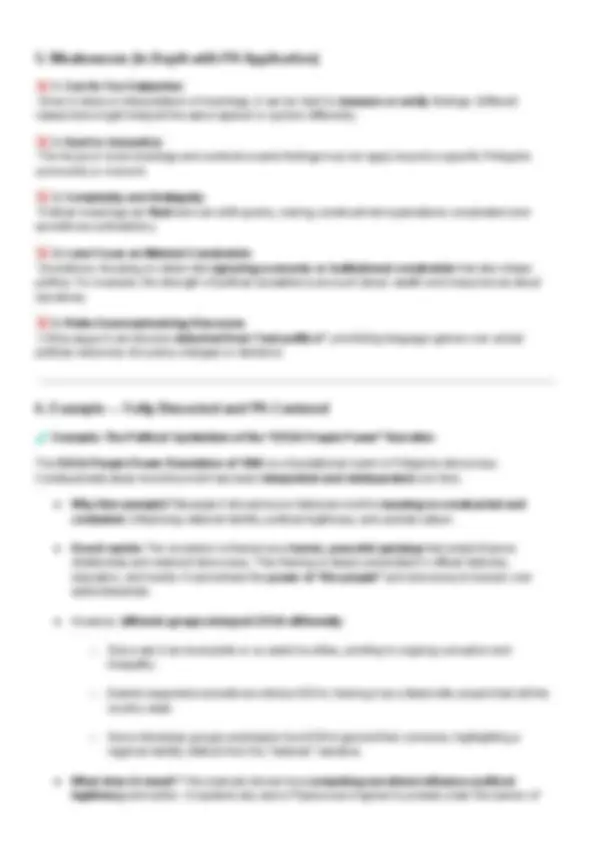

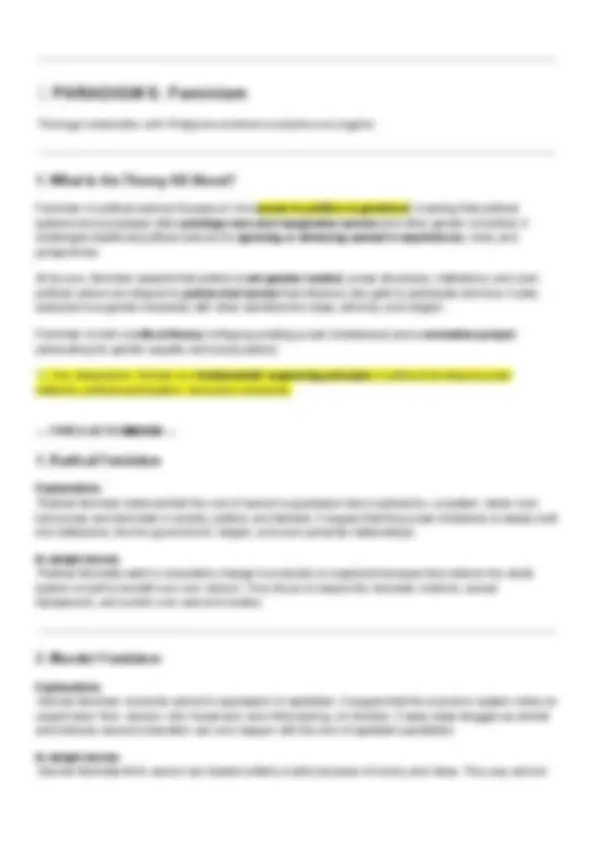
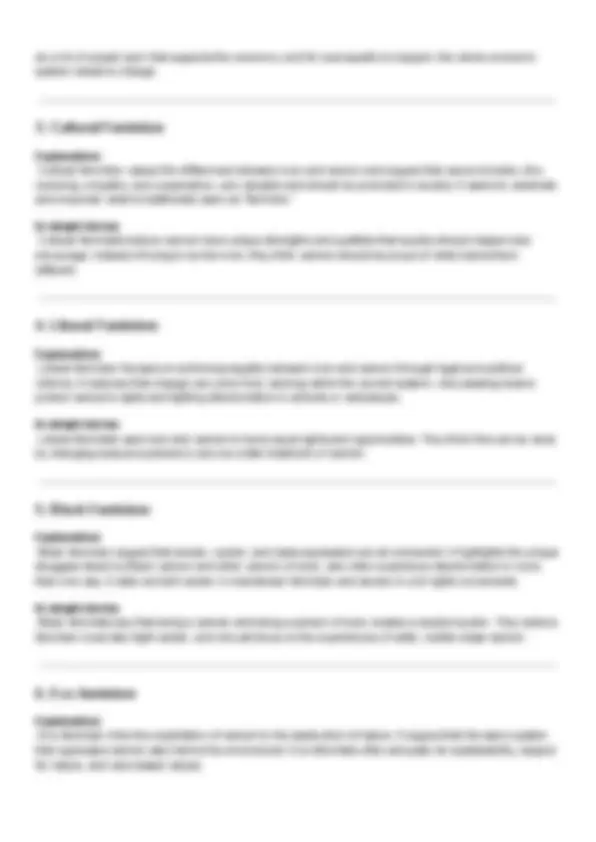
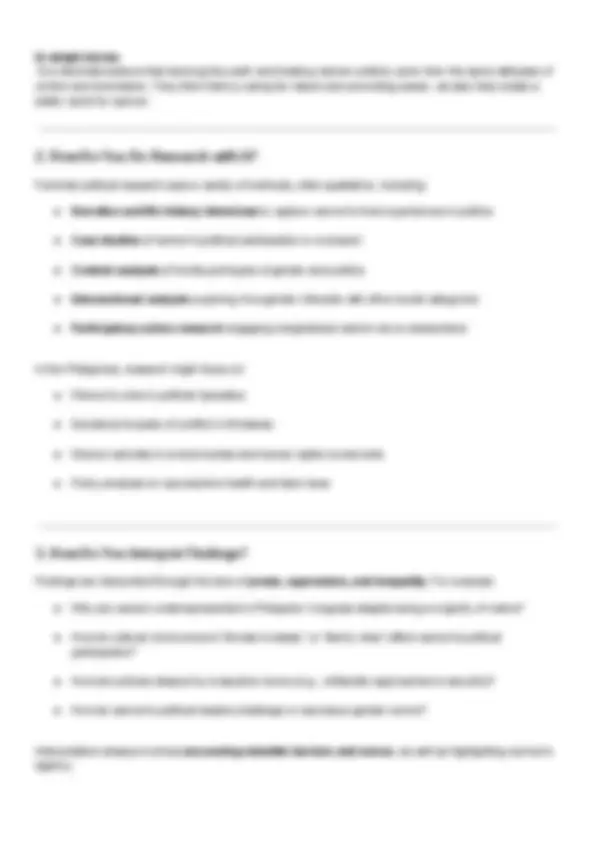
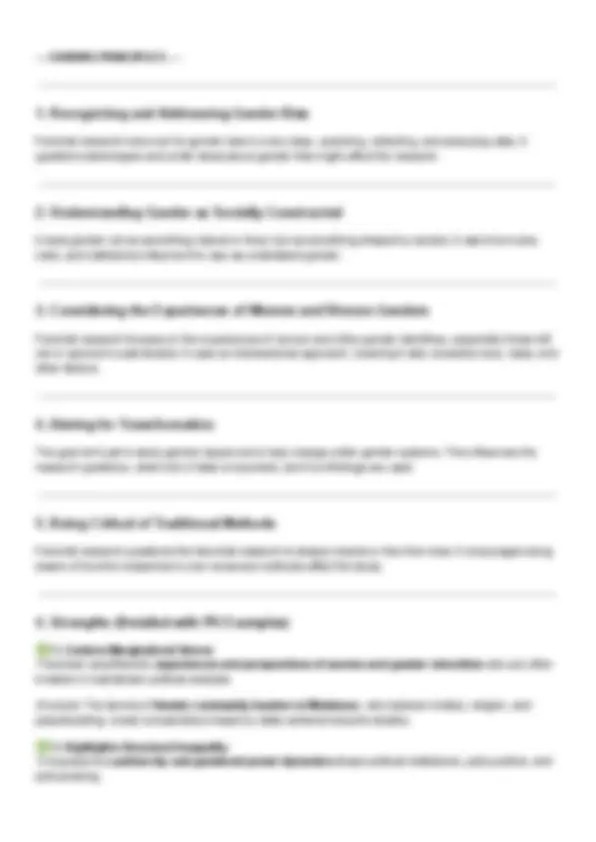
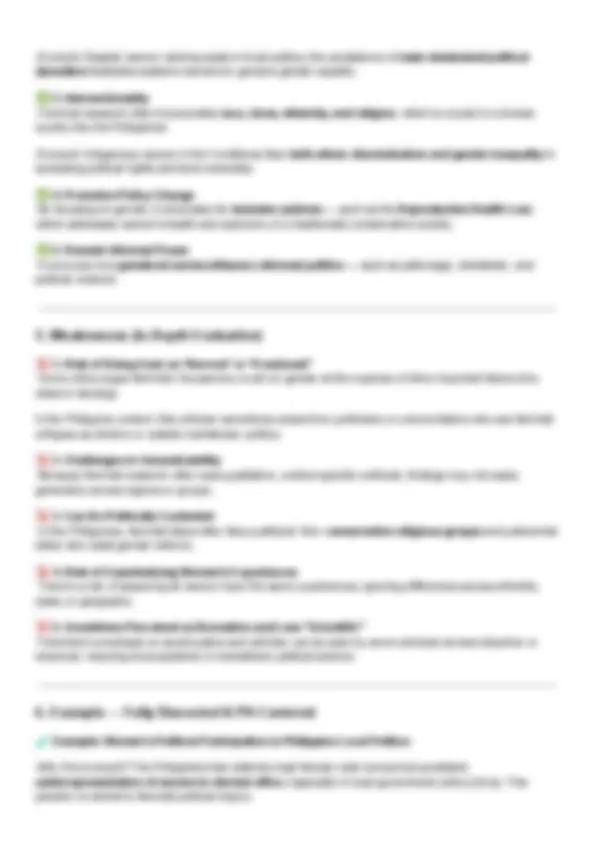
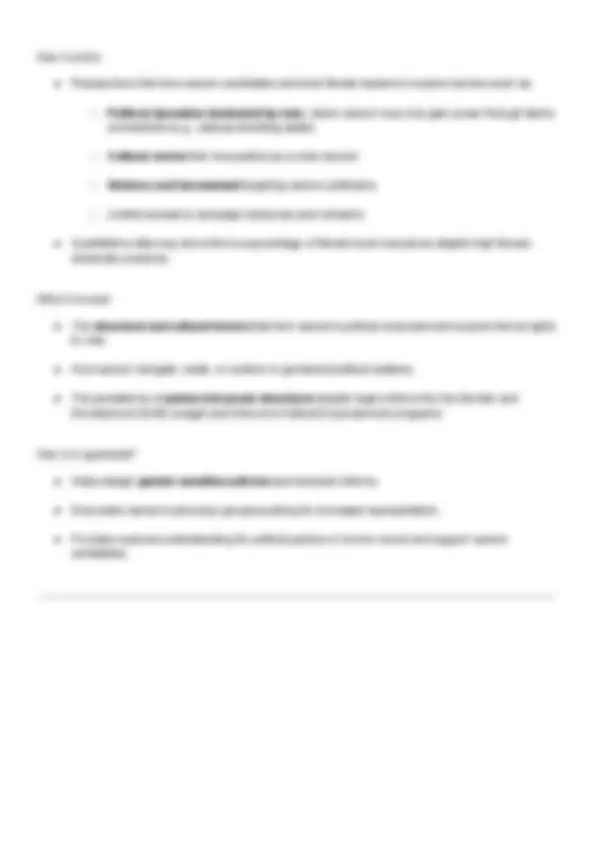

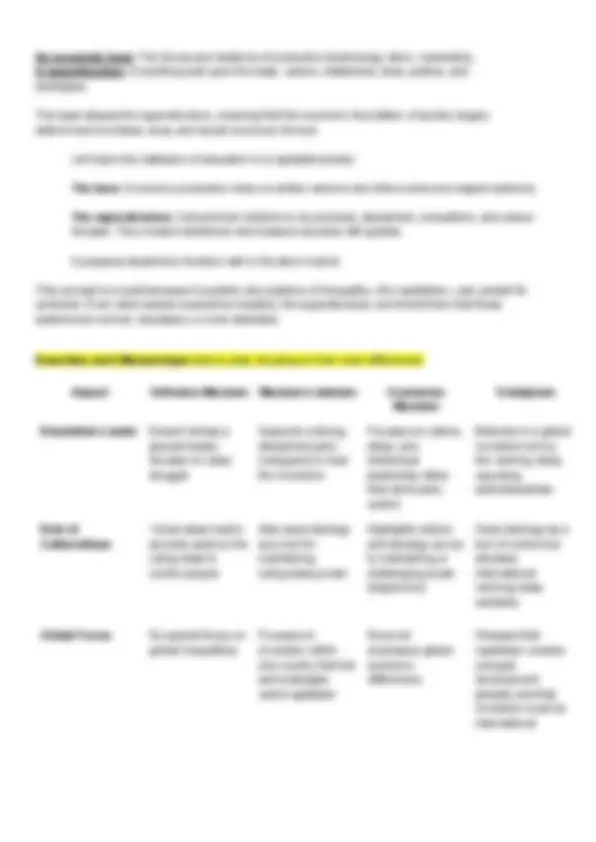
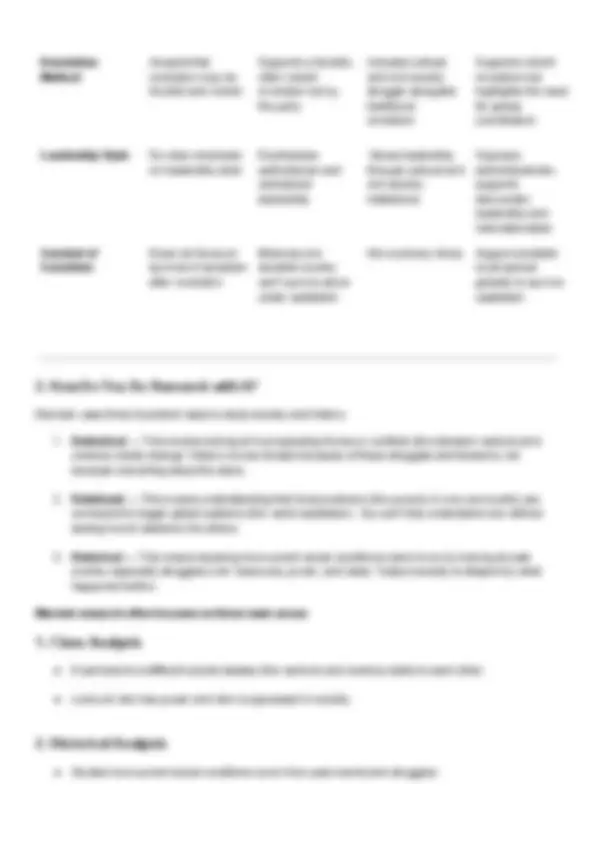
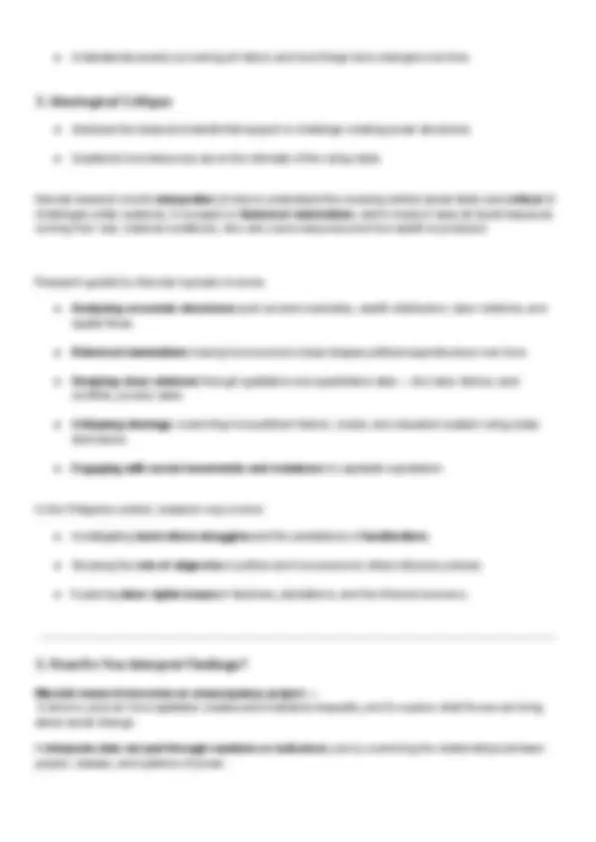
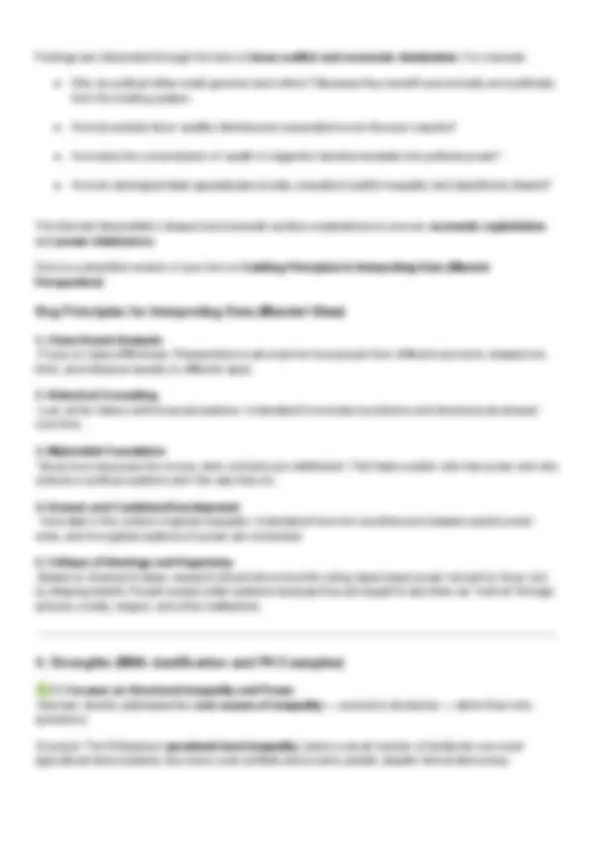
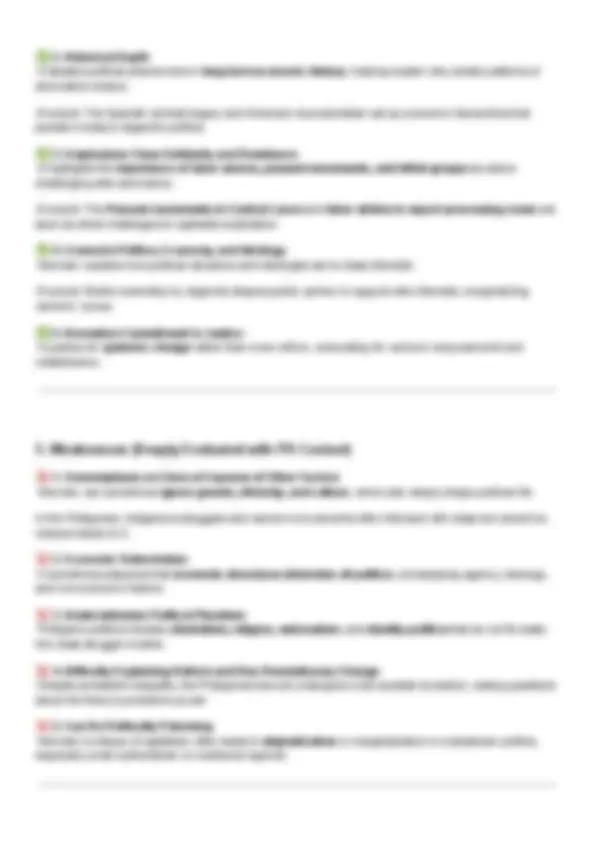
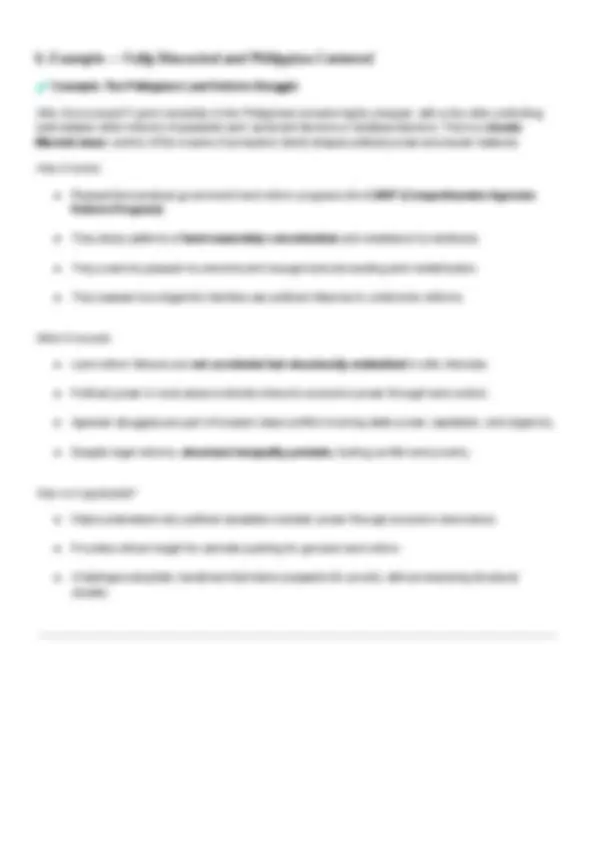
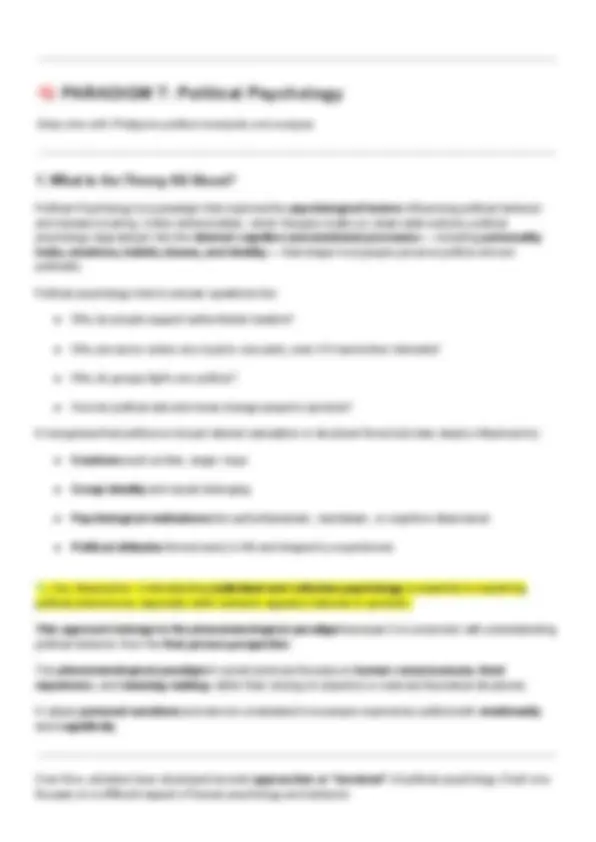
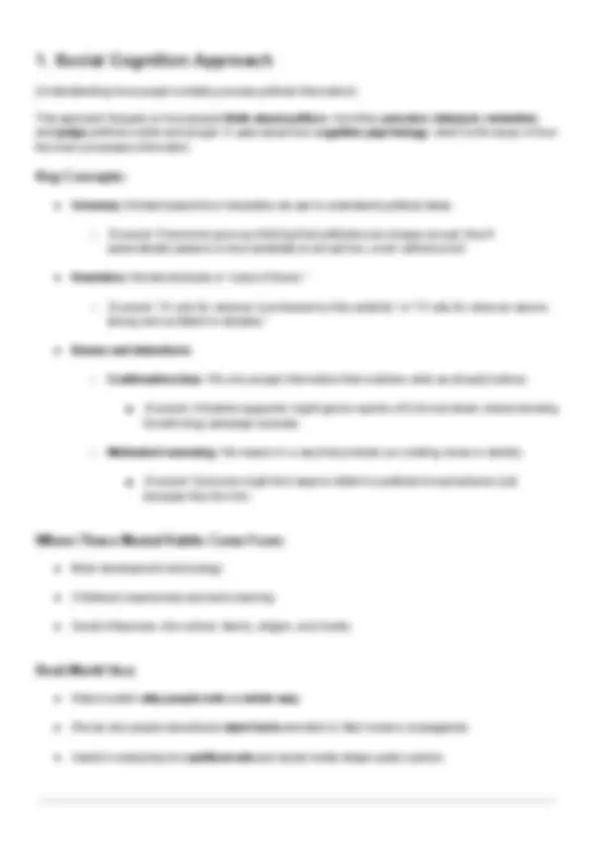
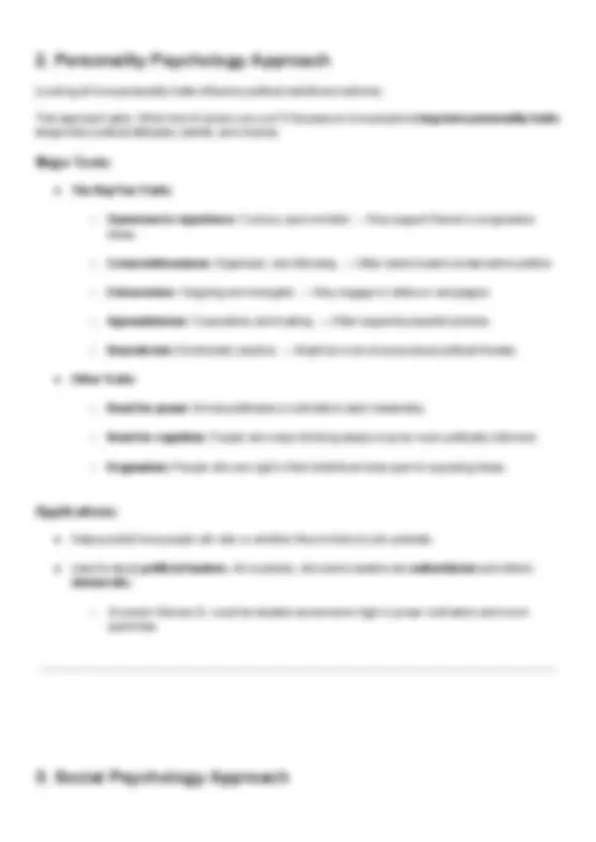
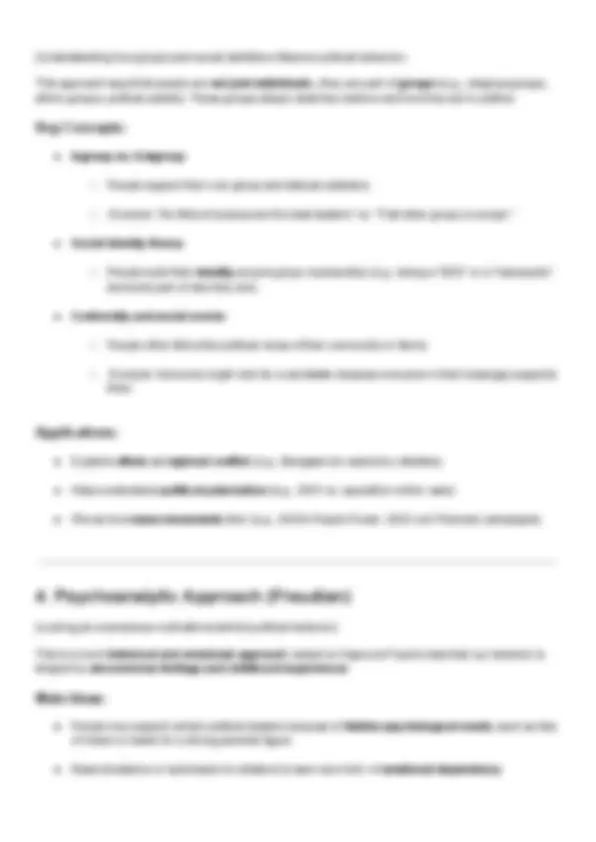
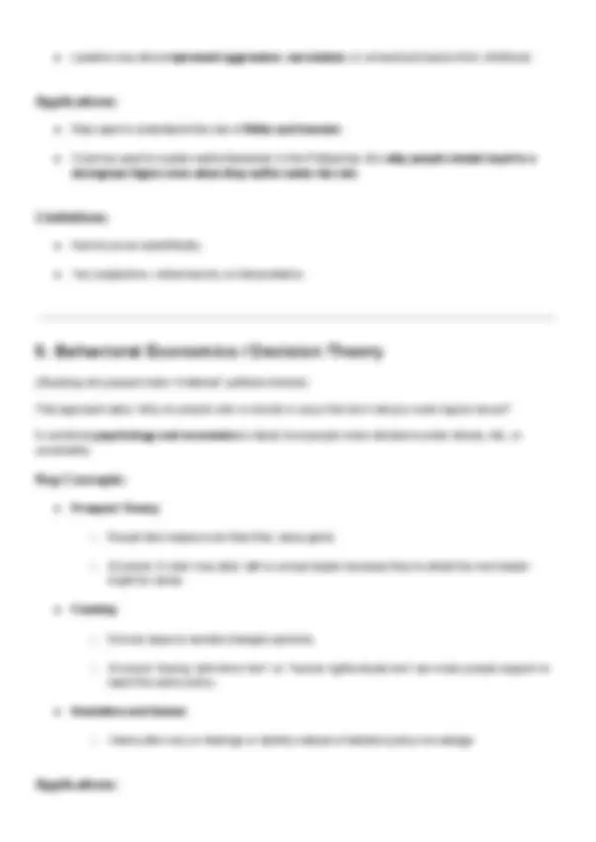

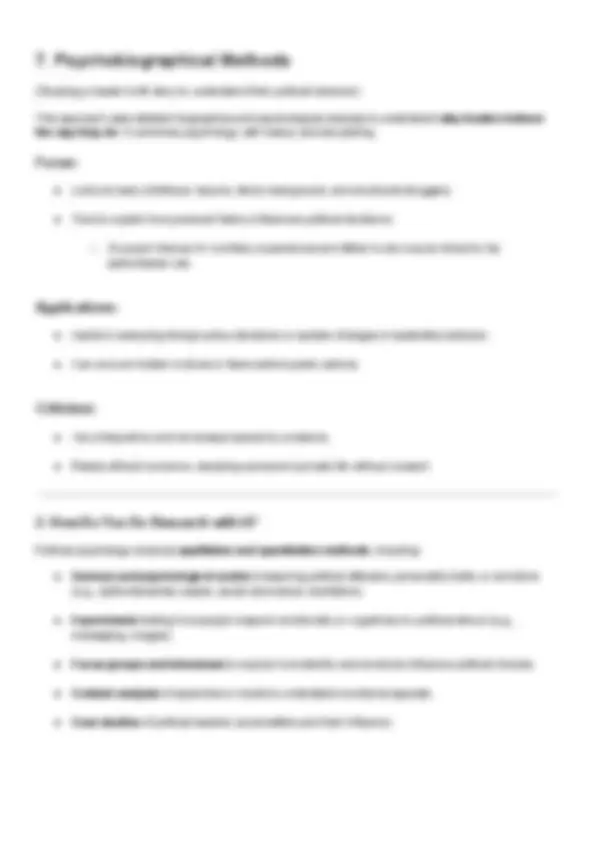
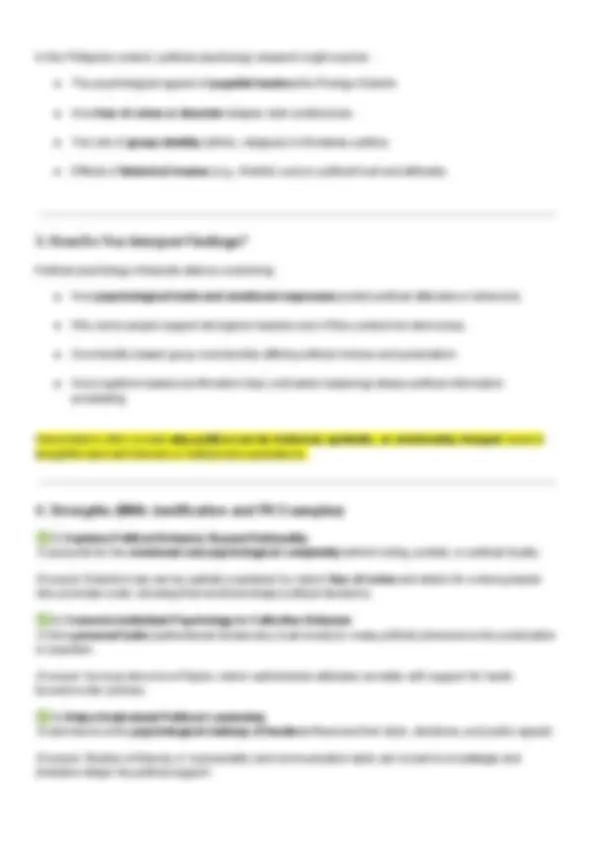
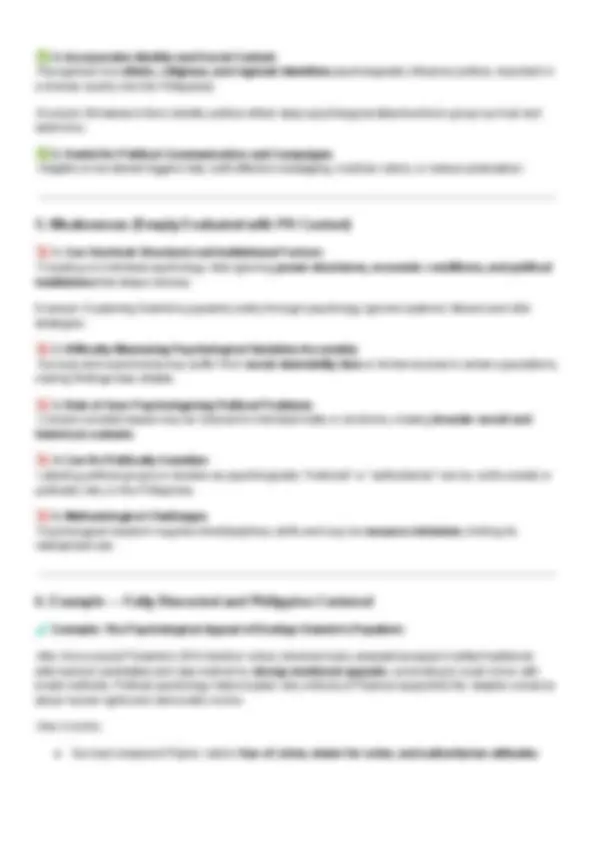
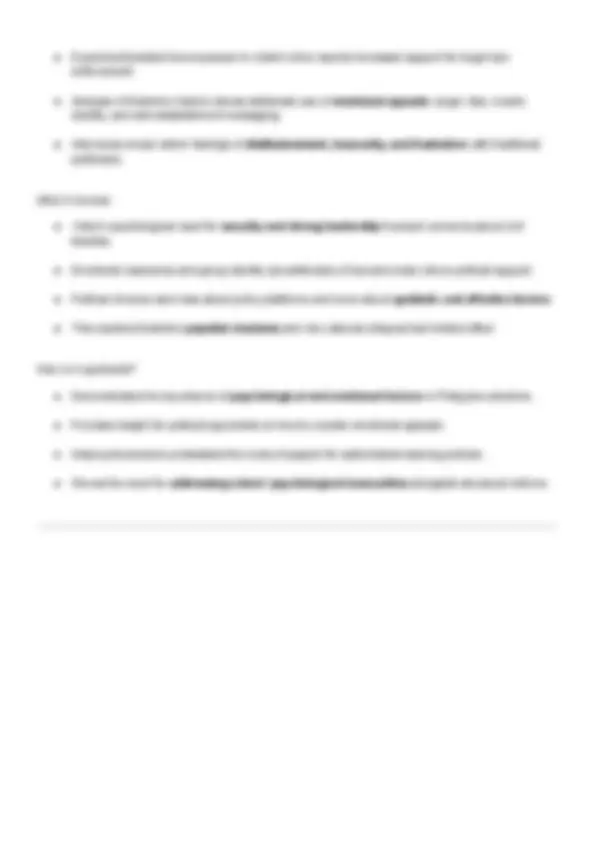
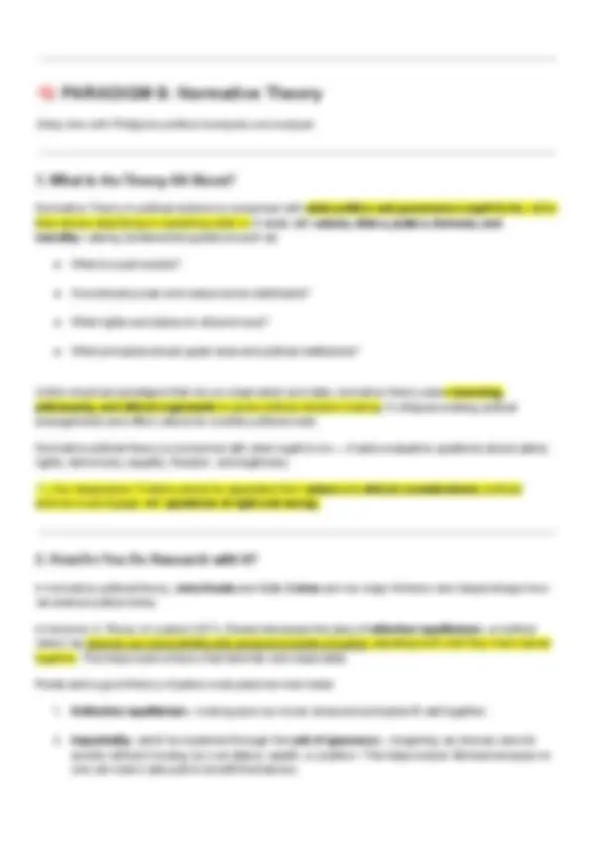
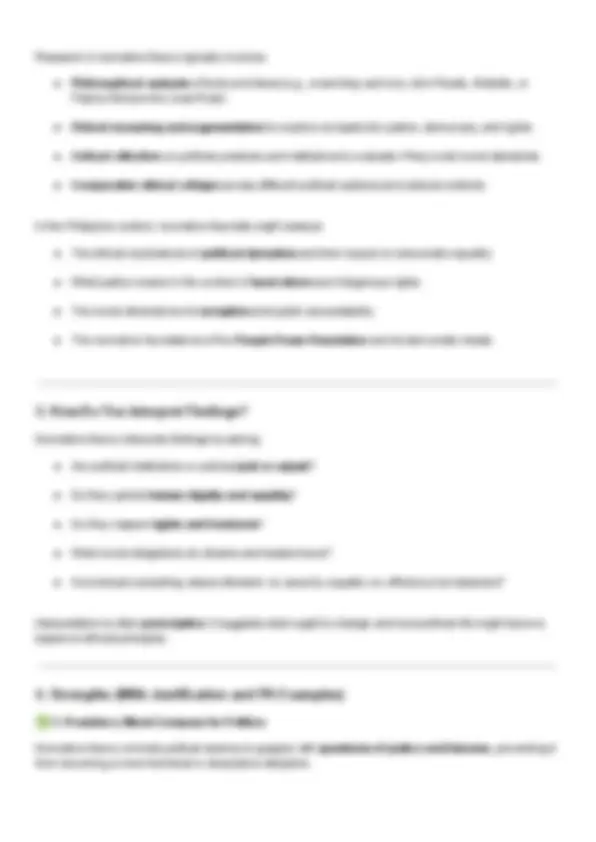
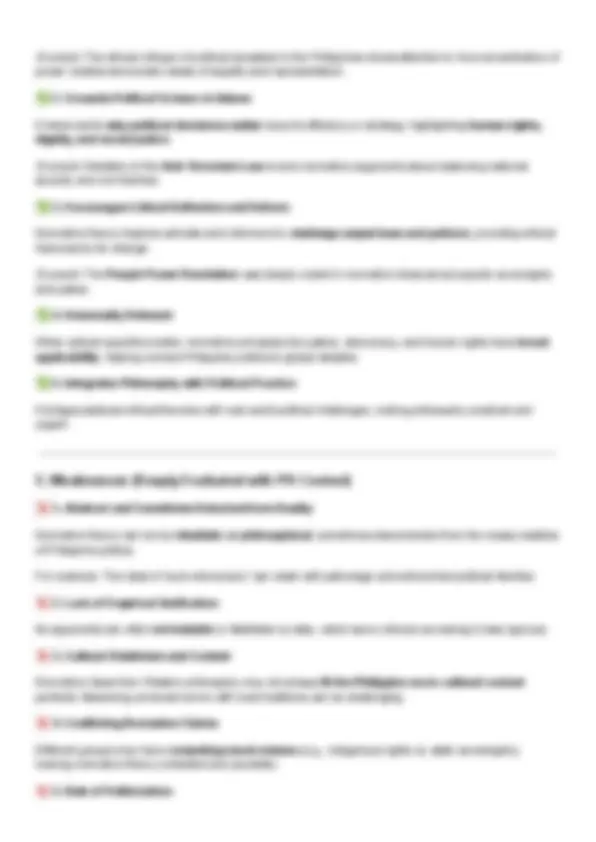
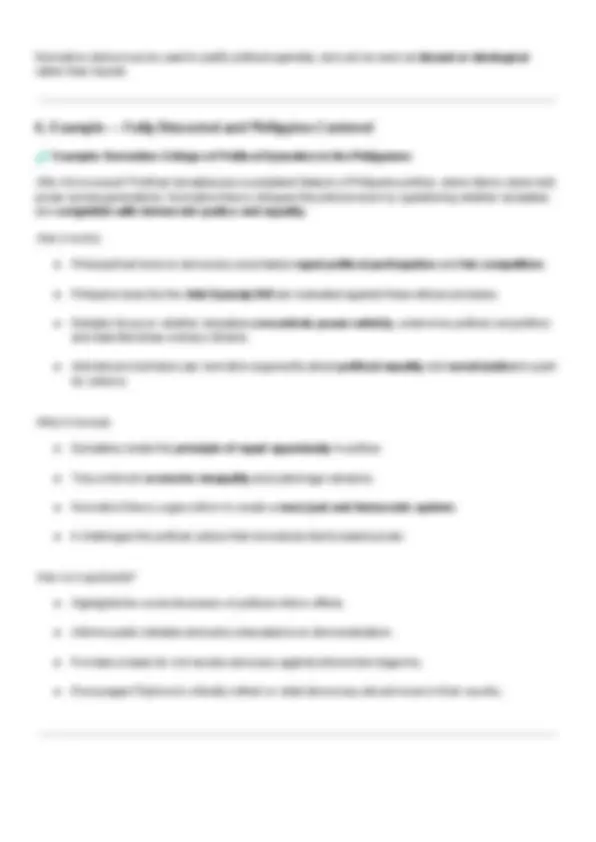
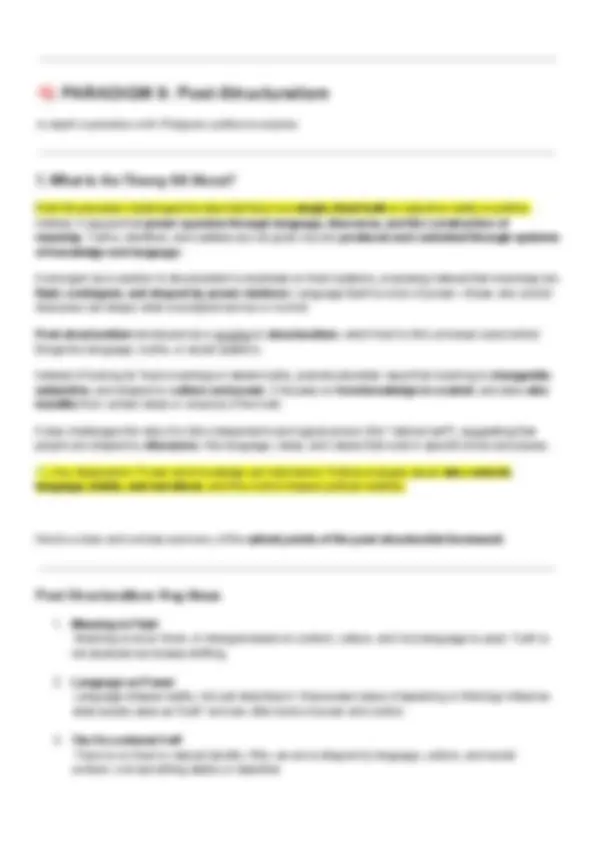
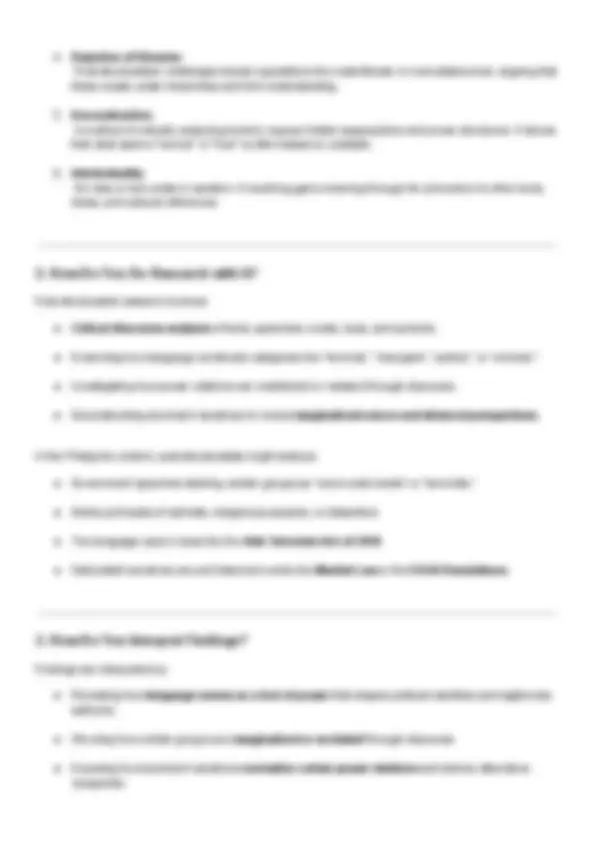
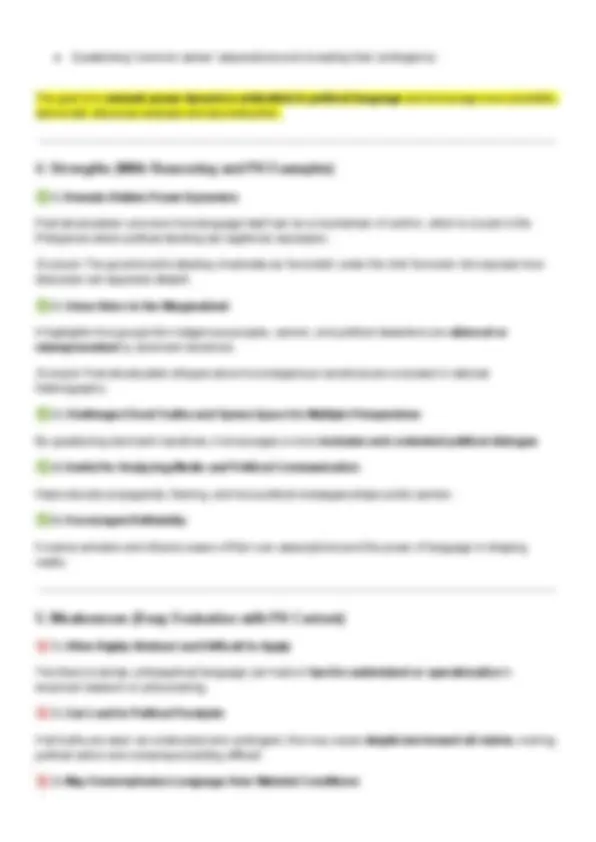
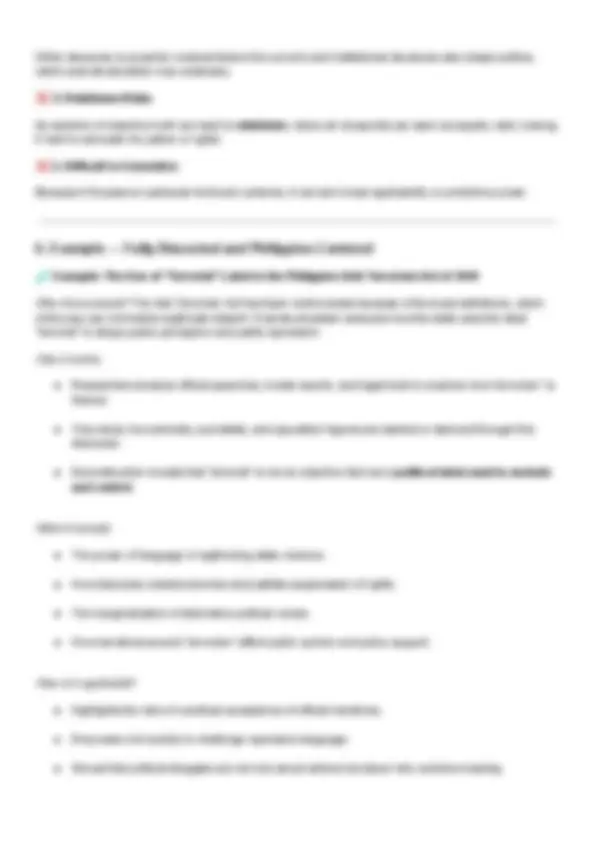

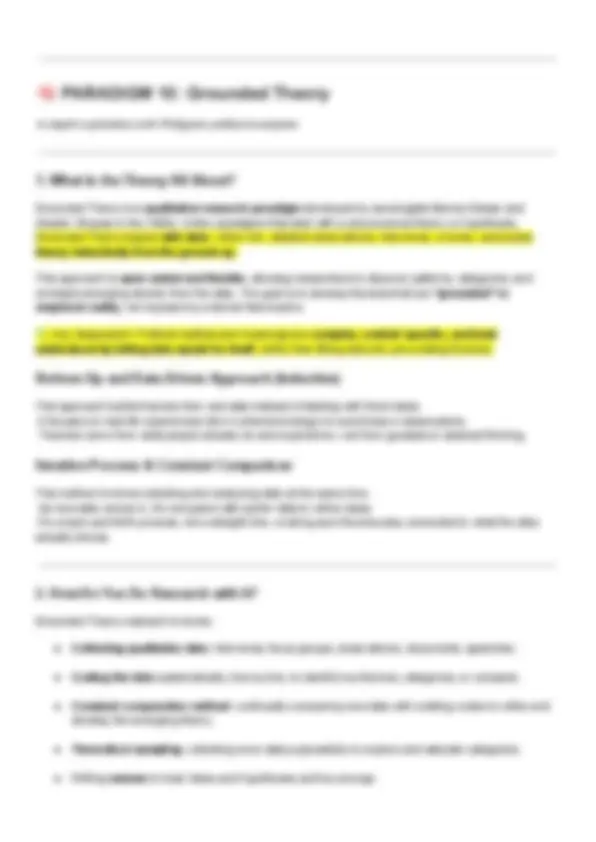
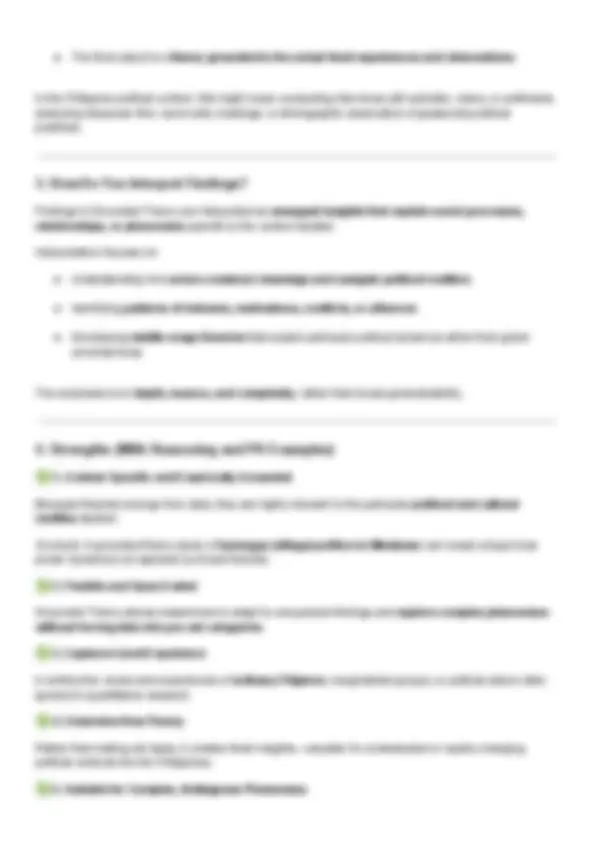
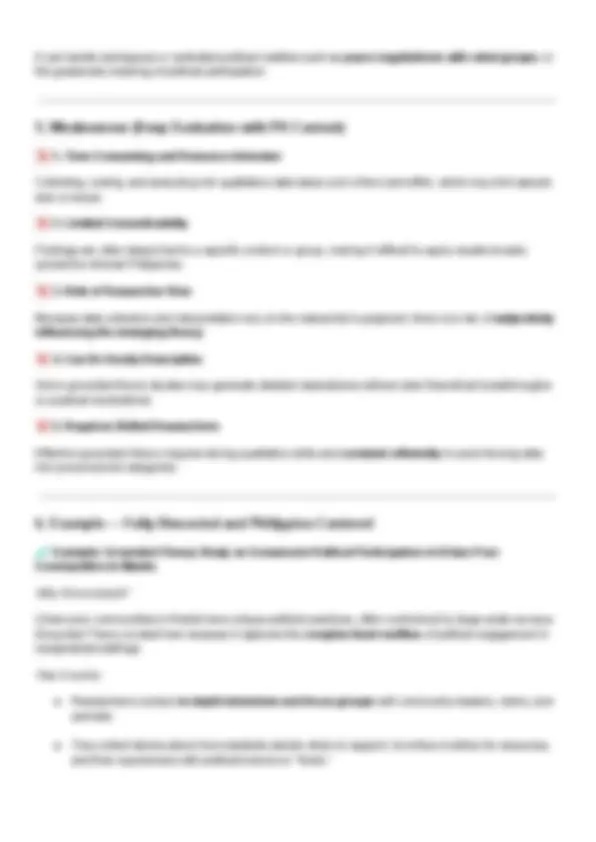
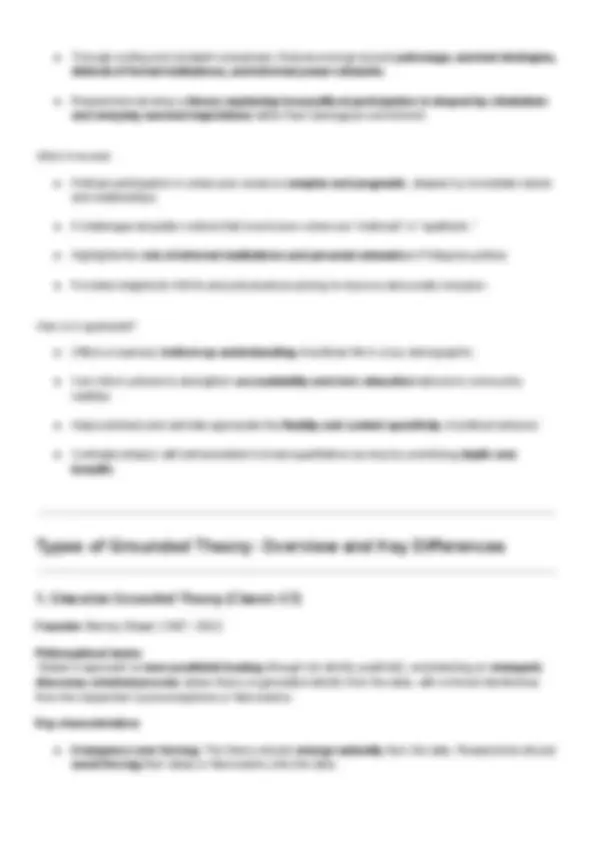
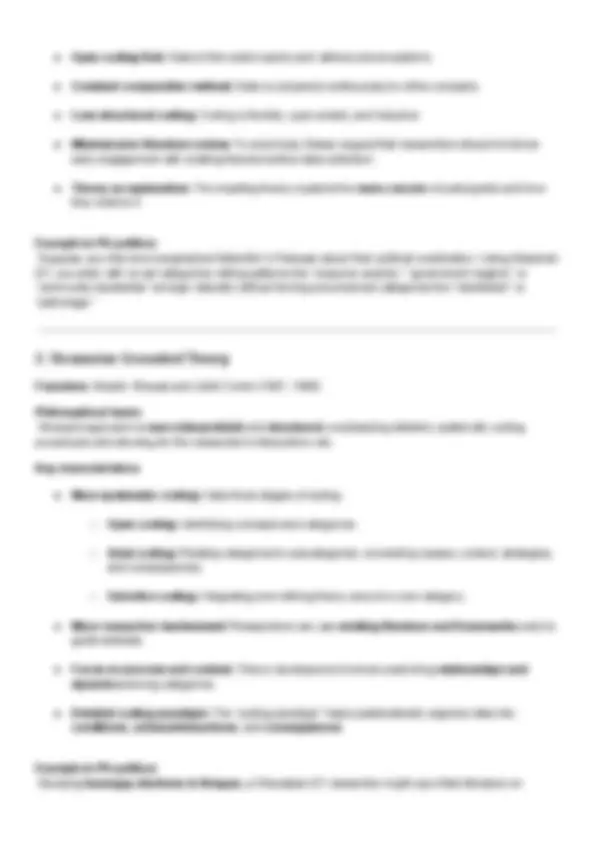
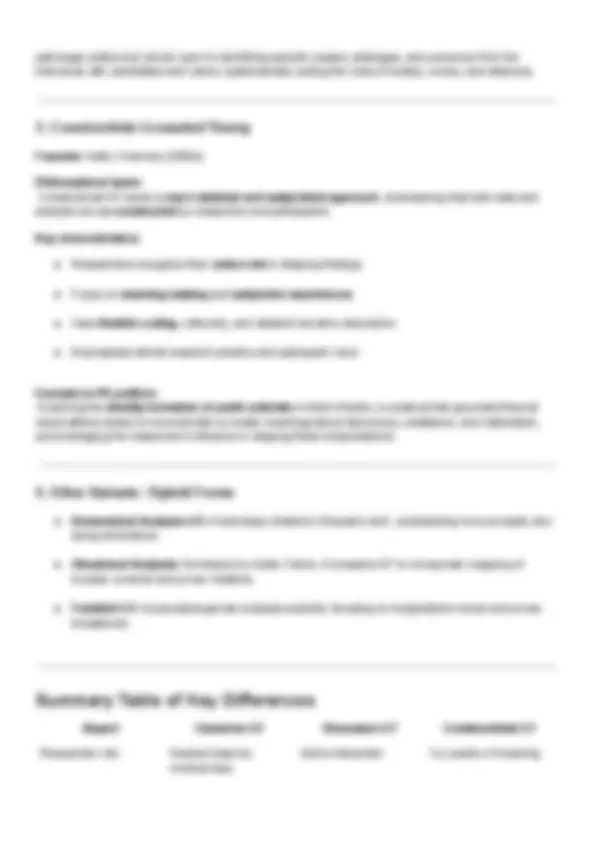
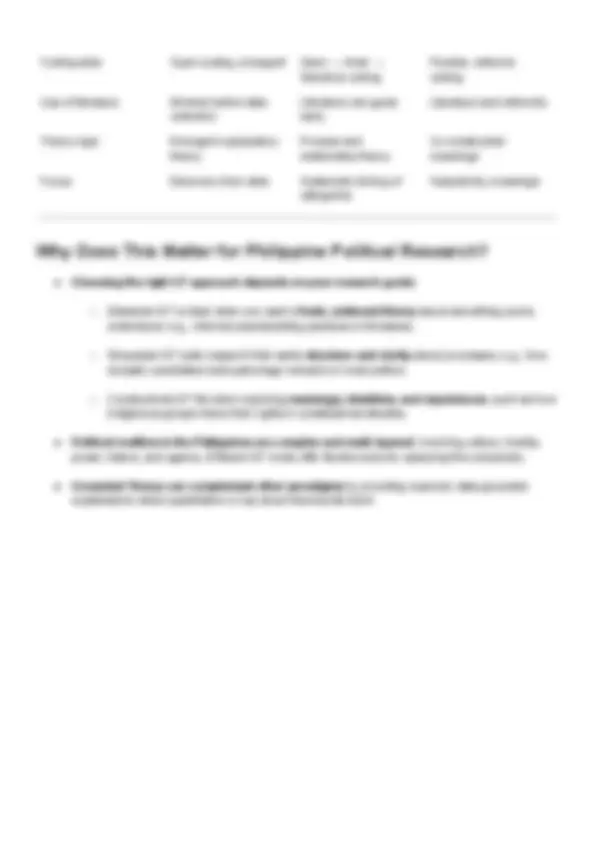


Study with the several resources on Docsity

Earn points by helping other students or get them with a premium plan


Prepare for your exams
Study with the several resources on Docsity

Earn points to download
Earn points by helping other students or get them with a premium plan
Community
Ask the community for help and clear up your study doubts
Discover the best universities in your country according to Docsity users
Free resources
Download our free guides on studying techniques, anxiety management strategies, and thesis advice from Docsity tutors
All You Need for PS Research in One File! This complete reviewer covers everything on Political Science Research and Research Ethics—research types, paradigms, variables, sampling, and all key ethical standards. Whether you’re preparing for a quiz, defense, or just want to deeply understand how research works in the field of poli sci, these notes will save you time and boost your confidence. Clear, compact, and packed with must-know info.
Typology: Study notes
1 / 75

This page cannot be seen from the preview
Don't miss anything!




































































A research paradigm is a way of seeing and doing research. It includes:
● Ontology – What is real in politics?
● Epistemology – How can we know what we know?
● Methodology – How do we find knowledge?
A research paradigm is a way of thinking about politics and doing research. It guides what we believe is real (ontology), how we gain knowledge (epistemology), and what methods we use (methodology). It matters because different paradigms lead to different explanations of the same issue. For example, the War on Drugs may be explained through behaviouralist surveys or post-structuralist critique of how "drugs" are framed.
🧠 Think of it like choosing the lens for your camera. Each paradigm shows you a different picture of politics.
Paradigm What is the Theory All About?
How Do You Do Research with It?
How Do You Interpret Findings?
Strengths Weaknesses
Behaviouralism Study politics by observing patterns of behavior.
Collect data using surveys, statistics, large datasets.
Look for trends or correlations (e.g., who votes more, and why).
Data-driven, objective, clear trends.
Ignores meaning, values, and deeper motivations. May miss hidden factors.
Rational Choice
Politics is strategic decision-ma king based on self-interest.
Build models or scenarios; apply game theory; simulate decisions.
Interpret actions as calculated moves to get the most benefit (e.g., party switching to gain votes).
Predictive power, clear logic, can simplify complex choices.
Assumes people are always rational. Overlooks emotion, identity, and morality.
Institutionalism Rules and structures shape political behavior.
Study laws, institutions, constitutions, and historical changes.
Findings show how rules influence choices (e.g., why reforms fail under certain systems).
Explains stability, long-term effects of rules.
May underplay agency, resistance, or culture.
Constructivism Ideas, beliefs, and meanings shape political reality.
Analyze language, symbols, speeches, cultural norms.
Interpret how people understand and frame politics (e.g., what does "freedom" mean in a society?).
Captures context, beliefs, and change.
Can be too subjective. Hard to compare across cases.
Feminism Power in politics is gendered; women’s voices and experiences are often excluded.
Collect narratives, case studies, focus on lived experiences.
Findings emphasize inequality, silenced voices, and how gender shapes political life.
Centers marginalized perspectives, reveals hidden power structures.
Critics say it's emotional or narrow. May lack generalizability.
Marxism Politics is a struggle between classes; the rich use the system to stay rich.
Analyze economic systems, history, and structural inequality.
Findings expose class domination and systemic inequality.
Rooted in justice, highlights power and inequality.
Can be too focused on class, missing gender, race, or culture.
Sample Answer: Both believe that politics is not just about facts but meanings. Constructivists say ideas shape behavior — labels like “hero” or “enemy” affect decisions. Post-structuralists go further: they say there is no fixed truth. Instead, they analyze how language creates power and silences others. For example, calling someone a "terrorist" can erase their real struggles or demands.
Constructivism believes that people create shared understandings through interaction, and these shared ideas shape behavior and social structures—so meanings can be studied and explained. Post-structuralism, on the other hand, argues that meanings are never fixed, always shifting, and deeply tied to power. It focuses more on how language creates divisions and exclusions, and it aims to question or disrupt what we take as “normal” or “true.” In short, constructivism builds understanding through shared meanings, while post-structuralism challenges and breaks down those meanings.
Sample Answer: Feminism would ask: how does this issue affect women or marginalized genders? It would focus on voices not usually heard. Marxism would ask: who benefits economically? Who controls the system? If the issue is political dynasties, feminism might focus on the lack of women leaders, while Marxism would highlight elite families controlling resources.
Sample Answer: Most paradigms describe or explain politics. Normative Theory asks what politics should be. It focuses on values like justice, freedom, and fairness. It’s less about prediction and more about evaluating laws, policies, or systems. For example, instead of asking if authoritarianism is effective, normative theory asks: is it morally right?
Sample Answer: It means reality is shaped by perspective and language. What we call “truth” is often a story told by those in power. Post-structuralists don't ask, "Is this policy good or bad?" They ask, "Who gets to decide that?" They uncover hidden power in labels, categories, and norms.
Sample Answer: Issue: Anti-Terrorism Law
● Behaviouralism: survey public support
● Constructivism: study how the label "terrorist" is used
● Post-structuralism: critique how the law silences opposition
● Normative theory: debate if it violates human rights
How to do research: Study institutions through historical analysis, legal texts, and case comparisons. Examine how rules affect political behavior over time.
How findings are interpreted: If a reform fails repeatedly, institutionalists look at how the system may prevent change (e.g., veto players, institutional inertia).
Strengths: Explains continuity and stability. Shows how the system itself can reward or punish certain actions.
Weaknesses: Can make people seem passive, like they’re only responding to rules. Sometimes underestimates the role of ideas, emotions, or resistance.
Constructivism says that what we believe shapes what is real in politics. Ideas, language, identity — these define how we act. Politics is built through meaning, not just laws or actions.
How to do research: Use interviews, discourse analysis, or ethnography to study how people talk about politics. Look at how terms like “nation,” “security,” or “leader” are used.
How findings are interpreted: Focus is on how people understand their world. For example, why does one group see a person as a hero while another sees them as a threat?
Strengths: Explains how culture and beliefs influence politics. Great for identity politics or nationalism studies.
Weaknesses: Can be hard to measure or prove. Very interpretive — depends heavily on the researcher’s lens.
Feminist theories argue that politics has been built mostly around male perspectives. They examine how power affects women and other genders, and how gender roles shape political life.
How to do research: Interviews, case studies, and storytelling. Focus on everyday experiences and structural issues like reproductive rights, political representation, or unpaid labor.
How findings are interpreted: Show how systems exclude or silence women. For example, analyzing why so few women run for high office or how laws ignore gender-specific needs.
Strengths: Gives voice to marginalized groups. Makes power visible in daily life. Pushes for inclusion and equality.
Weaknesses: Some say it focuses too much on gender alone. Others argue it’s not always broadly applicable across cultures or topics.
Marxist theory focuses on class and economic power. Politics is seen as a tool used by the elite to protect wealth and exploit the poor.
How to do research: Historical and economic analysis. Study ownership, labor, inequality, and state power. Look at who controls resources.
How findings are interpreted: Policies and laws are read as ways to maintain the dominance of the ruling class. For example, tax breaks for the rich are not just policy choices, but class interests.
Strengths: Very clear focus on inequality. Connects politics to economics. Promotes social justice.
Weaknesses: May ignore race, gender, or culture. Can be too focused on revolution. Sometimes feels outdated.
This theory explores how emotions, personality, trauma, and group identity affect political behavior. People don’t always act based on logic.
How to do research: Use psychological surveys, experiments, and interviews. Study political preferences, reactions to images, or stress responses.
How findings are interpreted: Actions like supporting authoritarian leaders are seen as emotional responses to fear, uncertainty, or identity threats.
Strengths: Captures irrationality in politics. Useful in understanding populism, polarization, or propaganda.
Weaknesses: Can be too focused on individuals. Often ignores structures, history, or systems.
This theory asks what politics should be. It deals with morality, justice, and the good society. It doesn’t just describe — it evaluates.
How to do research: Use philosophical reasoning, logical analysis, and engage with political theory texts. Debate ideals and ethical arguments.
How findings are interpreted: Conclusions are moral judgments — e.g., Is it right to limit free speech? Should the state ensure economic equality?
Strengths: Brings ethical discussion into politics. Encourages deeper thinking and responsibility.
Weaknesses: Not based on data. Critics say it’s too abstract. It’s harder to apply to practical problems.
Post-structuralism argues that there’s no one truth. Power is exercised through language, and we must question everything — including how knowledge is made.
Core Question Detailed Answer
What is the Theory All About? Behaviouralism argues that politics should be studied like natural sciences—through observable, measurable behaviors , not ideas or values. It emerged mid-20th century, especially in American political science, to make the field more scientific and objective. It focuses on what people do , not what they say or believe.
How Do You Do Research with It? Use surveys, large datasets, polling, statistics to find patterns in political behavior (e.g., voting turnout, protest participation). Techniques like regression analysis and opinion polling help make generalizations.
How Do You Interpret Findings? You look at trends and correlations : for instance, if older people vote more, or if people in urban areas tend to vote liberal. The focus is on "what is" , not "why" or "what should be."
Strengths ✅ It produces measurable results , useful for governments and institutions to improve policies. ✅ Offers a systematic, replicable method that allows comparisons across time and regions. ✅ Useful in elections, polling, and policy impact assessments.
Weaknesses ❌ It ignores deeper meanings behind actions—e.g., why people vote emotionally or irrationally. ❌ Reduces humans to numbers , overlooking culture, identity, or passion. ❌ May miss causation , only showing surface-level correlations.
Example Studying how income level affects voter turnout using national survey data. Why? Because it shows a direct, measurable behavior that can be correlated with other variables—exactly what Behaviouralism is designed to do.
Core Question Detailed Answer
What is the Theory All About? This paradigm sees people as rational calculators —actors make political decisions by maximizing personal benefit and minimizing cost. It treats politics as strategy , like a chessboard.
How Do You Do Research with It? Build models or scenarios , often using game theory. Researchers simulate how a rational person would behave in certain political setups (e.g., elections, coalitions).
How Do You Interpret Findings? Actions are seen as strategic and intentional —e.g., if a small party joins a larger coalition, it’s likely for influence or survival. It's not emotion or ideology, but cost-benefit logic.
Strengths ✅ Simplifies complex decisions , helping us understand political bargaining or negotiations. ✅ Has predictive power in scenarios like international relations or election strategies. ✅ Encourages logical clarity in political models.
Weaknesses ❌ Assumes people are always rational , which is unrealistic. People often vote against their interest or out of emotion. ❌ Ignores morality, identity, and history —reducing politics to math. ❌ Models can be overly simplified and detached from real life.
Example Analyzing why a party switches sides in parliament to gain more seats. Why? Because this kind of strategic move fits perfectly into the logic of maximizing political advantage—a key Rational Choice concern.
Core Question Detailed Answer
What is the Theory All About? Institutionalism argues that rules, laws, norms, and structures shape political behavior. Institutions provide stability and constraints. There are different versions (e.g., historical, sociological), but all agree that “the rules matter.”
How Do You Do Research with It? Study constitutions, electoral systems, political traditions , and how these evolve. Use historical case studies, legal texts, and comparative analysis.
How Do You Interpret Findings? You show how institutions influence outcomes. For example, presidential systems often lead to gridlock, while parliamentary systems can pass laws more easily.
Strengths ✅ Explains why some systems are more stable than others. ✅ Takes history and structure seriously —not just behavior. ✅ Good for
Core Question Detailed Answer
What is the Theory All About? Feminist political theory highlights how power is gendered. It critiques traditional politics for excluding or marginalizing women and emphasizes lived experience and intersectionality.
How Do You Do Research with It? Use narratives, interviews, case studies , and qualitative analysis. Explore how policy affects women differently or how women are represented.
How Do You Interpret Findings? Findings emphasize inequality and silencing. For example, how female politicians are interrupted more often in debates is seen as structural marginalization.
Strengths ✅ Centers marginalized perspectives. ✅ Reveals hidden structures of dominance. ✅ Encourages inclusion and equity in political research and practice.
Weaknesses ❌ Sometimes seen as too emotional or activist. ❌ May lack broad generalizability. ❌ Sometimes criticized for over-prioritizing gender over class, race, or culture.
Example Studying how maternity leave policy affects political careers of women. Why? Because it connects real-life gendered experiences with institutional consequences—core to feminist analysis.
Great! Let’s continue with the remaining five paradigms, using the same detailed and understandable structure:
Core Question Detailed Answer
What is the Theory All About? Marxism views politics as class struggle. The state and its institutions are tools of the ruling economic class (the bourgeoisie) to preserve their dominance over the working class (the proletariat). Political decisions are shaped by who controls wealth and production.
How Do You Do Research with It? Analyze economic systems , historical developments , and social structures. Use historical materialism —studying how material
(economic) conditions shape political systems over time.
How Do You Interpret Findings? Political outcomes are interpreted as the result of economic interests. For example, tax cuts for the rich aren’t just policy—they’re tools to preserve elite power.
Strengths ✅ Reveals systemic inequality and exploitation. ✅ Connects economics with politics in a powerful way. ✅ Offers a theory of change through revolution or restructuring of the system.
Weaknesses ❌ Can be overly focused on class , ignoring gender, race, or culture. ❌ Sometimes deterministic —suggesting everything is just about economics. ❌ Less effective at explaining modern democratic politics where class conflict is subtle.
Example Explaining how austerity policies hurt the working class while preserving the wealth of the elite. Why? Because it directly connects policy choices to class interests—central to Marxist analysis.
Core Question Detailed Answer
What is the Theory All About? Political Psychology explores how emotions, personality, identity, and cognition affect political decisions. It breaks away from the idea that voters are always rational—it says we’re often emotional, tribal, and biased.
How Do You Do Research with It? Use experiments , surveys , focus groups , or even brain scans. Study how fear, anger, trust, or identity affect political behavior (e.g., why people support authoritarian leaders).
How Do You Interpret Findings? Political behavior is seen as the result of psychological processes —e.g., anxiety increases conservatism, or people vote for a “strong” leader due to fear of insecurity.
Strengths ✅ Explains irrational behaviors , like why people vote against their own interest. ✅ Connects individual psychology to political outcomes. ✅ Helps understand populism, extremism, or propaganda.
Core Question Detailed Answer
What is the Theory All About? Post-Structuralism challenges the idea of a single, stable truth. It says power is embedded in language and discourse , and that meanings are constructed, not fixed. It’s about who defines reality and how.
How Do You Do Research with It? Use discourse analysis to study speeches, texts, media, and symbols. Ask: Who is speaking? Who is silenced? How is power maintained through language?
How Do You Interpret Findings? Interpret politics as contests over meaning. For example, labeling someone a “terrorist” vs. “freedom fighter” isn’t neutral—it serves a political purpose.
Strengths ✅ Reveals hidden power structures in everyday language. ✅ Challenges dominant narratives and gives voice to alternatives. ✅ Great for analyzing identity, nationalism, and global discourse.
Weaknesses ❌ Can be too abstract or nihilistic , offering no clear path forward. ❌ Often hard to apply practically. ❌ May reject all structure—making it hard to build theories or solutions.
Example Analyzing how the word "security" justifies mass surveillance. Why? Because it shows how certain terms gain power and shape political norms—central concerns of Post-Structuralism.
Core Question Detailed Answer
What is the Theory All About? Grounded Theory is inductive : you don’t start with a theory—you build one from the ground up. You gather data first, then develop concepts based on what people actually say and do. It’s about letting theory emerge from lived experience.
How Do You Do Research with It? Use interviews, observation, field notes , and analyze them iteratively. As you collect data, you develop and refine concepts, codes, and categories.
How Do You Interpret Findings? You interpret patterns as emergent meanings. Instead of applying a fixed lens (e.g., class,
gender), you let the themes emerge from the data itself. You might discover unexpected power dynamics or social norms.
Strengths ✅ Very flexible and grounded in real life. ✅ Responsive to context , avoids forcing data into preconceived models. ✅ Great for discovering new theories or concepts in under-researched areas.
Weaknesses ❌ Time-consuming and requires deep immersion. ❌ May be too open-ended , lacking structure or generalizability. ❌ Interpretation can be highly subjective —depends on the researcher’s insight.
Example Interviewing activists and building a theory of resistance based on their own stories. Why? Because rather than testing an existing theory (e.g., Marxism), Grounded Theory lets the theory emerge from those stories. That’s the essence of its inductive nature.
Would you like a chart or summary table of all 10 at the end, or a comparison between some of them? I can also help you turn this into a study guide or slides if needed.
Behavioralist research relies on quantitative methods , meaning it uses numbers, statistics, and large datasets to analyze behavior. This includes:
● Public opinion surveys (e.g., the World Values Survey, Afrobarometer)
● Election results and turnout data
● Polling and demographic statistics
● Regression analysis and multivariate models
● Longitudinal studies that track political attitudes or behaviors over time
The goal is to uncover regularities in political behavior across populations. This means researchers ask questions like:
● Who votes, and why?
● What factors predict support for a political party?
● What social conditions lead to protest or rebellion?
The methodology is meant to eliminate bias by relying on numbers, not interpretation.
Behavioralists interpret research findings through causal explanation and empirical consistency. A key criterion in behavioral research is falsifiability , because the results are meaningful only if the study could have produced disconfirming evidence. The concept of falsifiability is derived from Karl Popper's critique of traditional positivism. Popper argued that what distinguishes scientific theories from non-scientific ones is not their ability to be verified, but rather their capacity to be falsified.
For example, when we say "all apples are red" statement: This statement is falsifiable because it can be proven wrong by the observation of apples that come in various colors like green, yellow, and purple.
In behavioralism, findings are interpreted based on statistical relationships between variables. Researchers look for correlations (e.g., “education level is positively correlated with voter turnout”) or causal inferences (“people who trust the government are more likely to comply with public policy”).
Interpretation focuses on:
● What patterns emerge?
● What predicts what?
● How strong is the relationship between variables?
Importantly, behavioralism does not focus on individual intentions or meanings. Instead, it sees behavior as shaped by external influences — demographics, social pressures, education, media exposure, etc.
GUIDING PRINCIPLES
A good theory should be clear and logical. Its ideas should fit together without any contradictions. If the theory has parts that don’t make sense together, it can’t properly explain what it’s trying to.
Also, a theory should align with other well-established theories in related areas. If it goes against proven ideas in similar fields, its accuracy becomes questionable. Being consistent with other theories helps make it more reliable and contributes to a broader understanding of social and political life.
Lastly, a strong theory should make predictions that can be tested through real-world observation. It shouldn't just describe things—it should say what is likely to happen in certain situations. These predictions can then be checked using data. Testing helps show whether the theory is correct or needs improvement.
In short, theories should both explain and be open to being tested.
✅ 1. Scientific and Objective Behavioralism helps political science achieve the status of a rigorous empirical science , with methods akin to those used in economics or sociology. By using statistical tools, it reduces subjective interpretation.
✅ 2. Allows for Large-Scale Comparisons You can compare voter behavior across countries , regions , or time periods , because standardized data allow for consistent measurement.
✅ 3. Enables Policy-Relevant Insights Behavioralist findings can inform policymakers. For instance, if a study finds that youth are less likely to vote due to distrust in institutions, governments can address that through civic education campaigns.
✅ 4. Uncovers Trends and Predicts Outcomes Behavioralism is especially useful in election forecasting , policy compliance studies , and predictive modeling , because it builds patterns from large datasets.
✅ 5. Democratizes Research By focusing on average citizens (voters, protesters, members of civil society), behavioralism moves the spotlight away from elites , showing how everyday people shape politics.
❌ 1. Ignores Meaning and Intention People do not always act in rational or measurable ways. Behavioralism may record that voters from a certain income group support a populist leader — but it often fails to explain why , beyond surface-level correlations.
For example: it may say “low-income people vote for X candidate,” but miss the emotional , cultural , or historical reasons behind that choice.